1lumen selects and reviews products personally. We may earn affiliate commissions through our links, which help support our testing.
Manker MC13 II SBT90.2 review
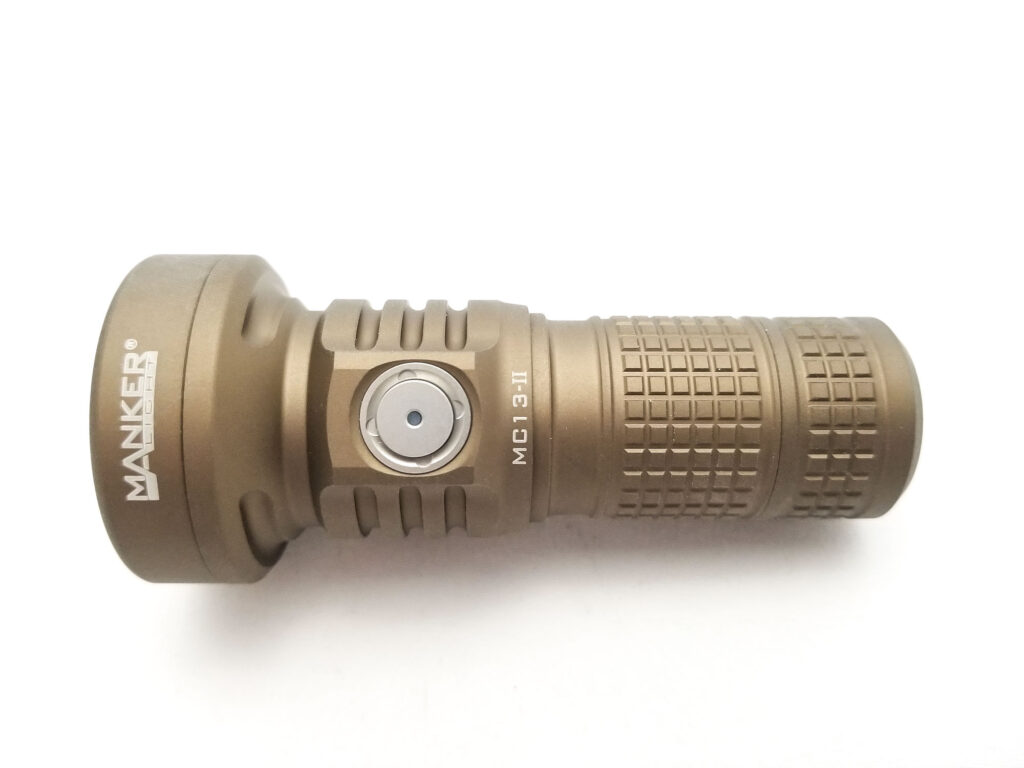
Manker MC13 II Limited Edition specs
| Brand & Model | Manker MC13 II Limited Edition |
|---|---|
| Flashlight category | Pocket thrower |
| LED | Luminus SBT90.2 |
| Max. output | 4000 lumens |
| Max. beam distance | 665 meters |
| Max. beam intensity | 110,556 cd |
| Battery config. | 1×18350 or 1×18650 |
| Onboard charging | Onboard USB type C |
| Modes | 7 |
| Blinkies | Strobe, Beacon, SOS |
| Waterproof | IP67 |
| Review publication date | May 2023 |
Review intro:
Another Manker! Fresh off the very impressive and incredibly handy Manker MC13 II pocket thrower, another MC13 II is now gracing my workspace, courtesy of flashlightgo.com, so a big shout out to them for sending this out for a look-see. However, this isn’t any ordinary MC13 II. We all know some flashlight manufacturers seem to have an inbuilt disdain for mediocrity, and go to great lengths to make a flashlight ‘better’. Sometimes it works wonderfully, sometimes, not so much, as our regular readers can attest to.
A bit of history: Mankerlight was founded by a couple of Chinese flashlight enthusiasts who turned their passion and ideas into products, which over time, have evolved from a few offerings to a pretty extensive product lineup. The MC13 II I reviewed featured a Luminus SFT-40-W and even though it didn’t meet the factory spec for output, it did very well in the beam distance department. However, there’s another MC13 II LED option available that bumps the specs up…a lot. Read on for more. Oh, a big thanks to Flashlightgo.com for sending this one out for review! Note, since this light’s host is virtually identical to the last Manker MC13 II I reviewed, most of the smaller details are duplicated for this MC13 II Limited Edition.
Package quality.
Manker packages their lights nicely. Some come in neat tins with graphics, some in regular boxes. THis light came in a very Thrunite-esque box with a lift-off lid, colorful Manker orange and black graphics, configuration label, and some specs. Here’s what you get:
- Manker MC13 II Limited Edition flashlight
- Lanyard
- Manker branded button top 18350 battery
- 2 spare o-rings
- USB type C cable
- Silicone diffuser
- Warranty card
- Manual
This is a pretty generous loadout in this segment and everything you need to get going, even if you’ve never owned a flashlight before. I liked the padded lanyard with the Manker logo as well. You also don’t need a battery charger as any 5 volt output wall wart will suffice. I really liked the edition of a diffuser since it adds a lot of utility since it can double as a lantern.
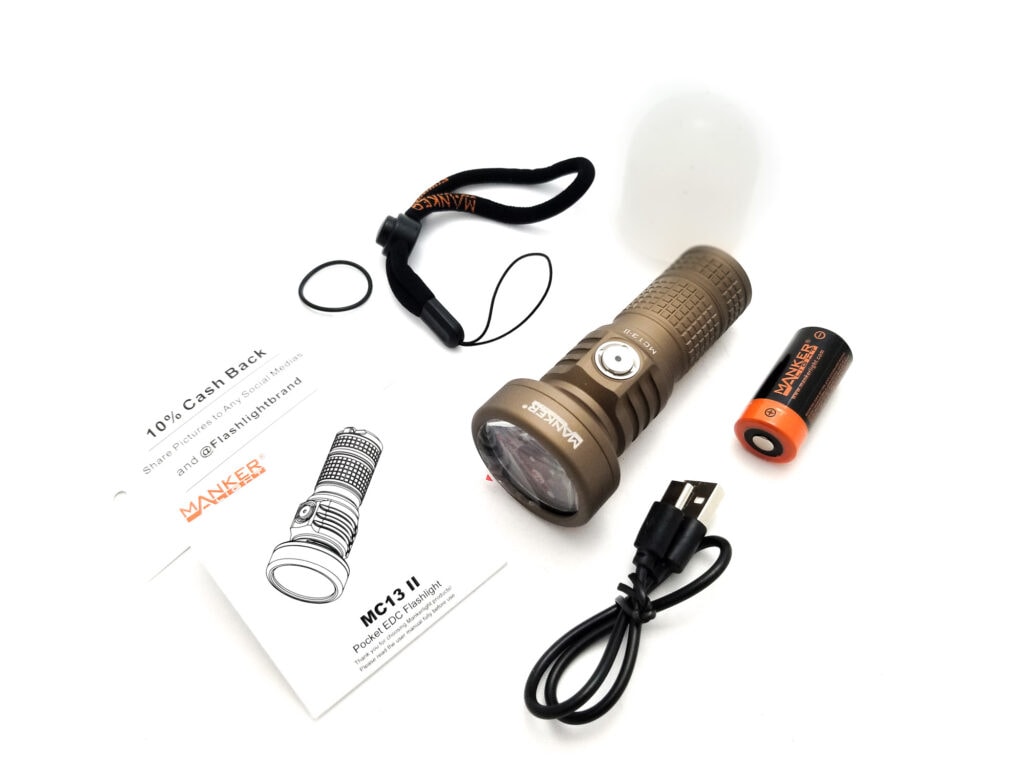
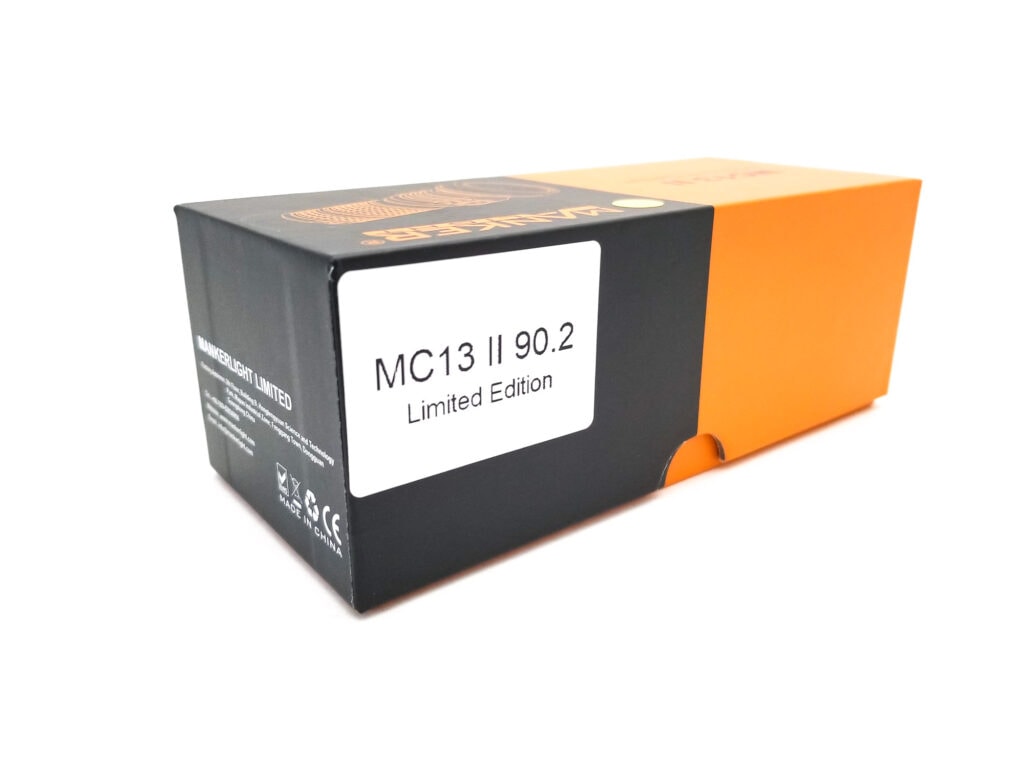
Flashlight in use
The MC13 II is a pocket flashlight, so it’s going to be very portable and have some obligatory features for general purpose use. Take it on a walk or hike, use it around the home, or illuminate things far away. It’s small enough to easily pocket, even in 18650 mode. With the 18350, it’s a pretty compact flashlight. Before you use the light, make sure to remove the insulator in the battery tube. My sample was also in the lockout mode which requires 4 quick clicks from off to unlock.
I really enjoyed handling the light. It’s nicely balanced, very compact in 18350 mode, and the small size makes it really easy to maneuver, and pretty pocketable, more so than any other 18650 size light. It’s also very pocketable despite not having a pocket clip. There’s gripping surfaces in all the right spots, with the battery tube and tailcap featuring frag grenade style polygonal blocks and a bricky finish that really helps with grip. I had no trouble gripping the light in all hand positions, and it points very intuitively even in 18350 mode. With the tube extended in 18650 mode, it’s even nicer, despite the extended tube having a roughly 2.5 inch section of no texturing where it telescopes in and out. There’s a single e-switch for switching duties, and the button is covered in a fancy sandblasted 304 stainless steel cover, and is set in an equally fancy stainless bezel. The switch has a central LED indicator for battery state, charge, and on state, and it lights up for the first 5 or 10 seconds after turn on, but doesn’t stay lit and is not lit on standby. It’s set in a raised portion of the head, and is easy to find by feel. The switch action is nice and predictable, with positive clicks and a nice feel.
Opposite the switch is the USB type C charge port covered with a nice silicone rubber cover. It fits flush to the body, and was mostly snag-free. There is a magnet in the tailcap, and although I’m not a huge fan of these on pocket lights, I think it’s nonetheless a welcome feature here. It’s decently strong, and helped the MC13 II cling to ferrous surfaces quite well. I got it to stably hold itself horizontally on a thin area (a pocket clip from another light). Tail standing is no problem either, and Manker includes a silicone diffuser that turns it into a pretty handy-dandy lantern.
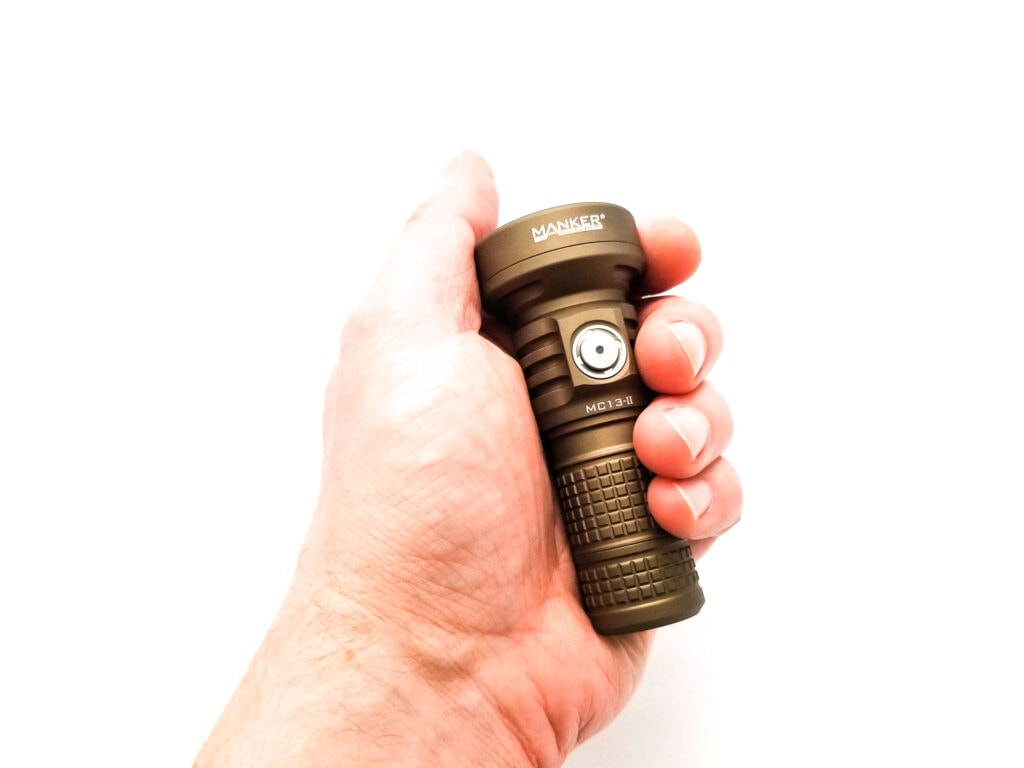
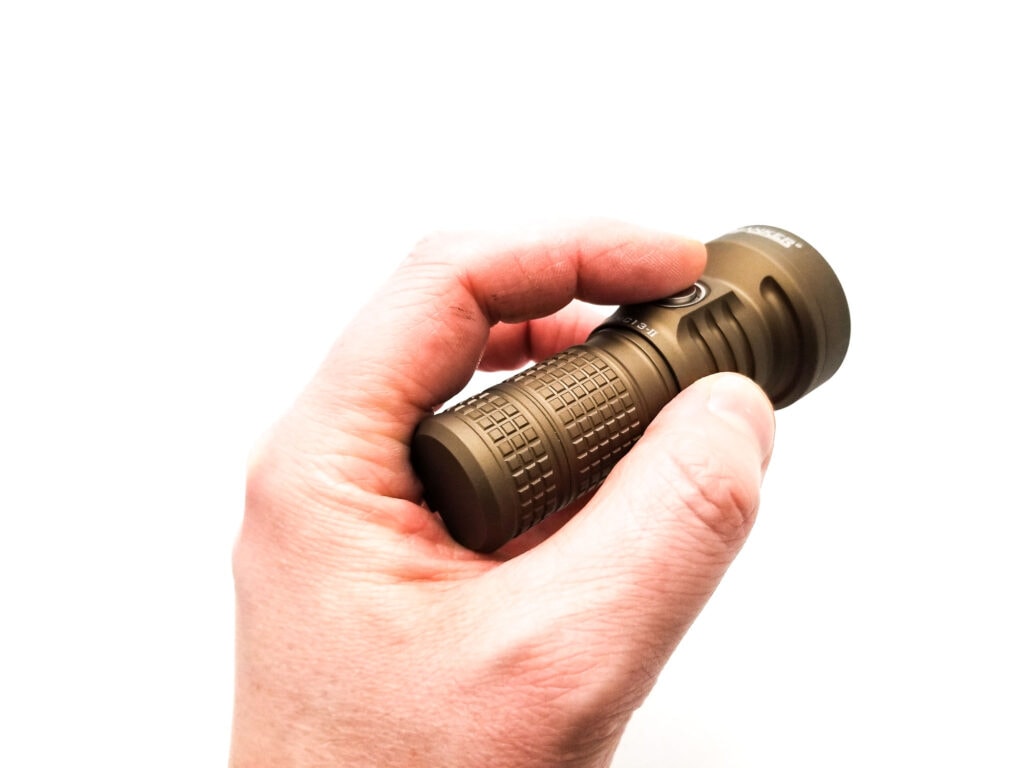
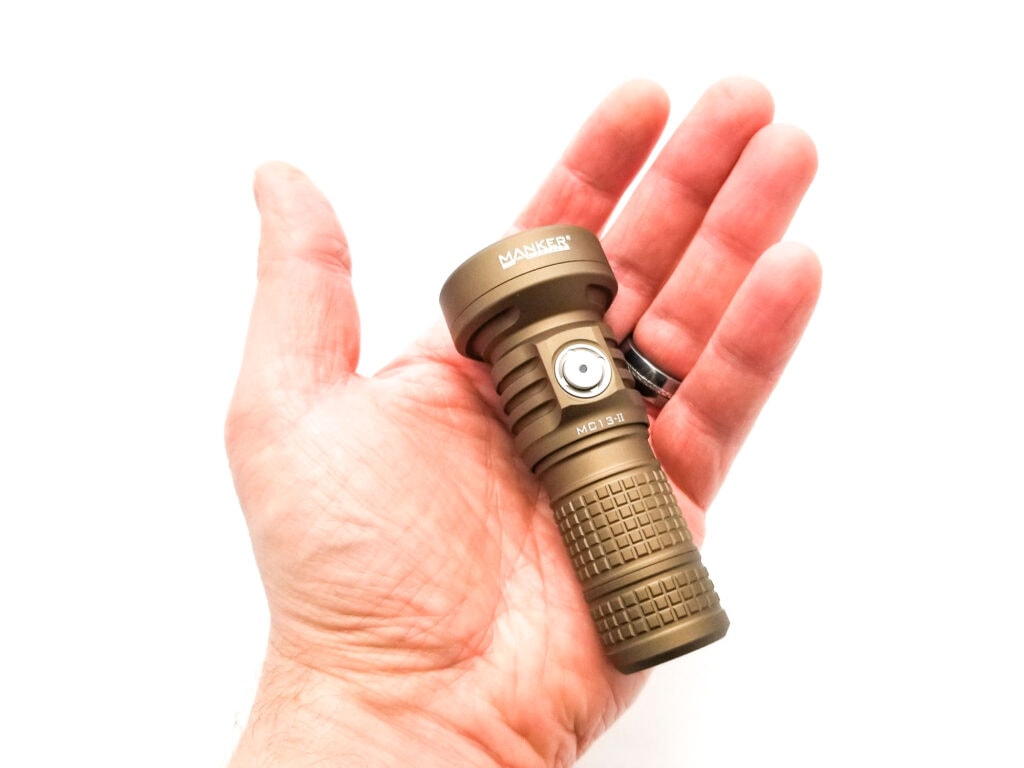
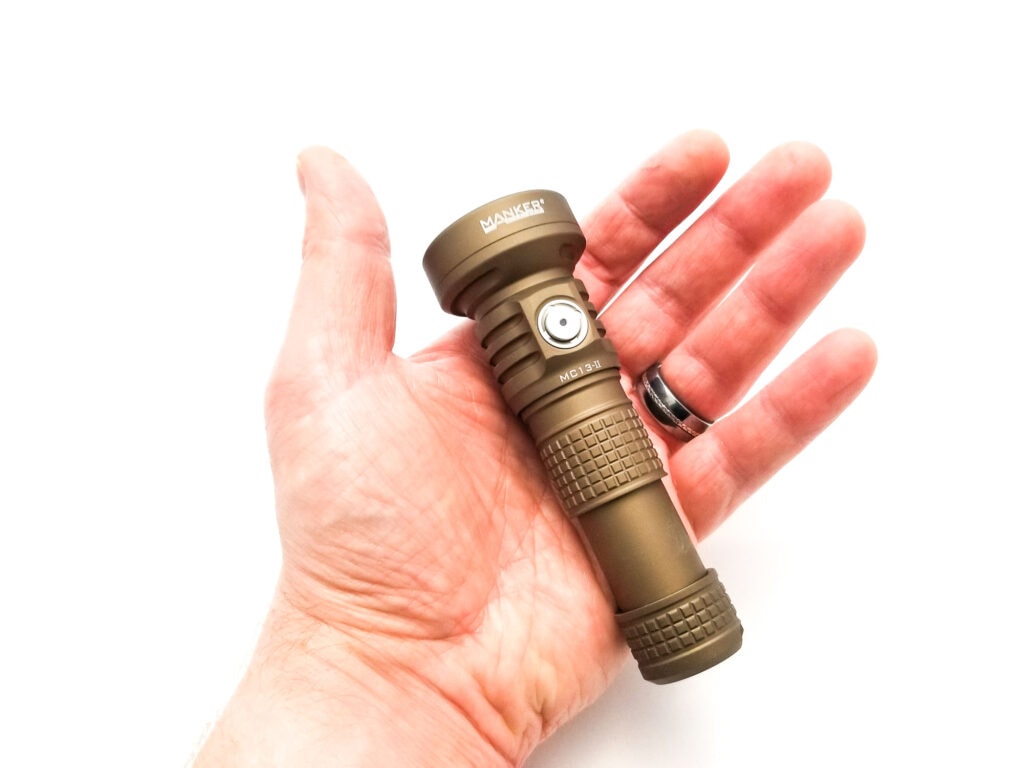
Build Quality and Warranty
This isn’t my first go with a Mankerlight product, and the first MC13 II was a very nicely crafted and well-made flashlight. They fall somewhere in between Thrunite and Lumintop price-wise, and the MC13 II sample light with the SBT90.2 version comes in around $100 US. That’s a lot for a pocket light, but being as this one’s special, I think it’s worth it.
The build quality is very, very nice. It passes the maracas test fine, there’s no anomalous gaps or misaligned parts, everything lines up nicely, and the machining is free of defects or tool marks. Manker says it’s milled from the ubiquitous aircraft aluminum, so probably 6061-T6. The finish is advertised as type III HA, and it’s nicely done, with no defects, thin spots, or off-colors. The light comes in two colors, sand and black. My sample came in the sand color and I dig it. The anodizing is marketed as type III HA, and its decently bricky and nicely grippy, which I like. It’s also flawless, and had even coverage with no blemishes. All the edges are knocked down and smoothed as well. If you fancy to do so, the bezel can be unscrewed by hand to remove the lens and reflector. The LED shelf is very finely machined, and the LED sits on a DTP copper MCPCB. I couldn’t see any thermal paste, but I’m sure there’s some under the MCPCB. The solder joints look fantastic, and there’s no flux residue.
Like the non-special MC13 II, this light has a spring for the driver positive contact, but it’s a bit different in the special edition light. It’s pretty thick and a bit longer and stiffer. It seems to be made from multi-stranded copper alloy, and it’s probably the stiffest spring I’ve encountered in a while, which is great for holding the batteries in place tightly against the contacts for a good current path. This is a nice feature usually seen on tactical-use and professional lights since it adds durability. Peering down the battery tube shows a press-fit, larger tail spring.
The threads on the tube are fully anodized, triangular cut and pretty smooth, but could benefit from some lube. I use SuperLube synthetic grease for my lights, and I recommend that or silicone paste. The inner threads for the telescopic battery tube are bare and pretty smooth also, but not lubed either. There’s o-rings sealing every major joint including the lens, and Manker gives this MC13 II an IP67 rating. I can attest the light is sealed up nicely, since removing and replacing the battery tube created positive pressure inside the light, evidenced by the charge cover making a pfft noise when opened. This leads me to believe there’s an o-ring sealing the telescoping battery tube.
For the warranty, Manker gives you a decent one with a 5 year term. Take it away Manker! Mankerlight provide high-end products and intimate 5 Years warranty service to dealers and end users. Mankerlight provides easy, reliable, speedy service to all lights under our warranty. Dealers will be responsible for customers. 1. Please contact the dealer for replacement if you experience any problem with Manker product within 15 days. 2. The dealer will offer free repairment service or replace the flashlight with the same or similar model if Mankerlight flashlight fails during normal use within a period of 5 years. 3. LEP flashlight, rechargeable battery, flashlight with built-in battery are warranted for a period of one year (12 months) from date of purchase.
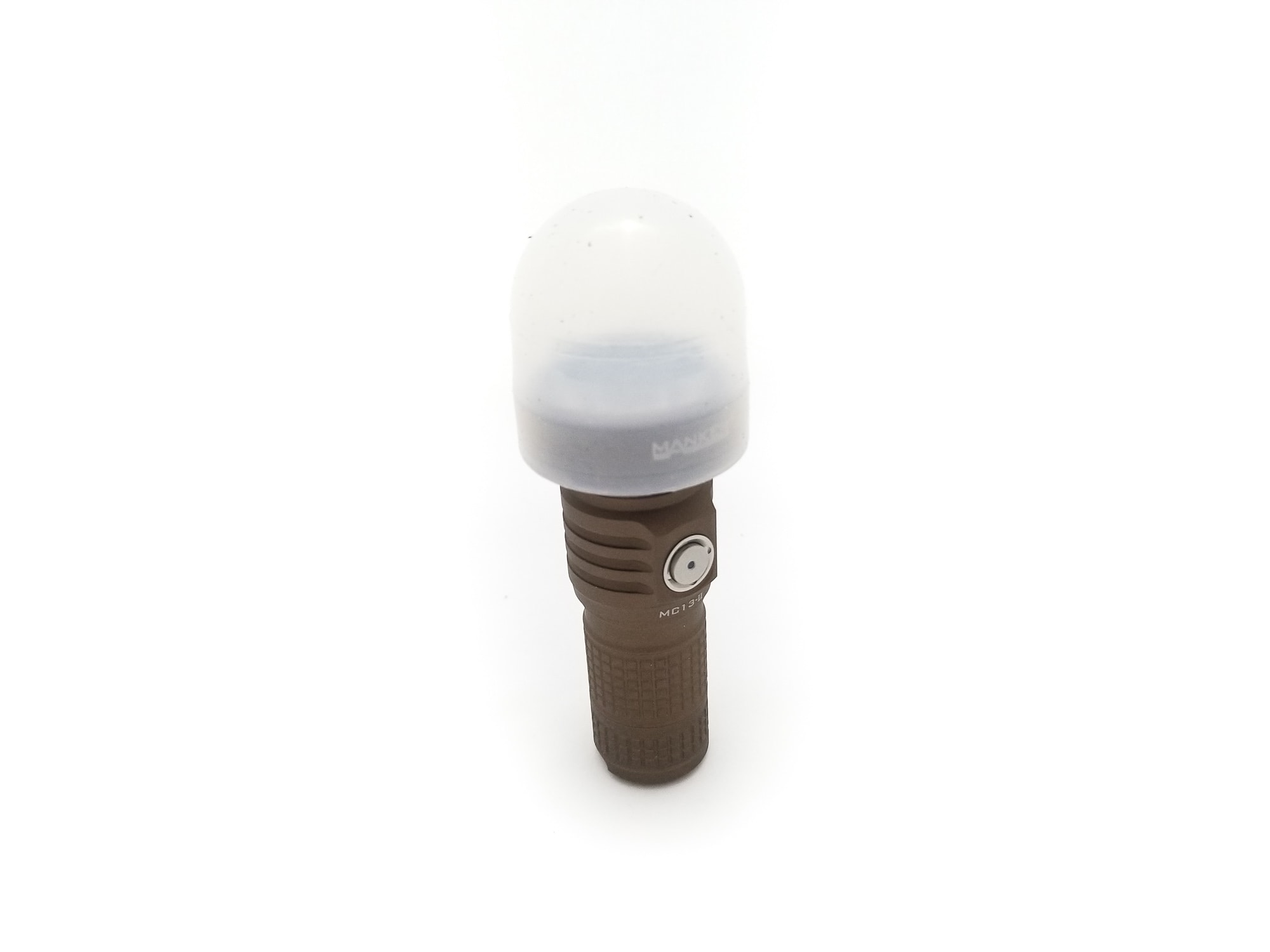
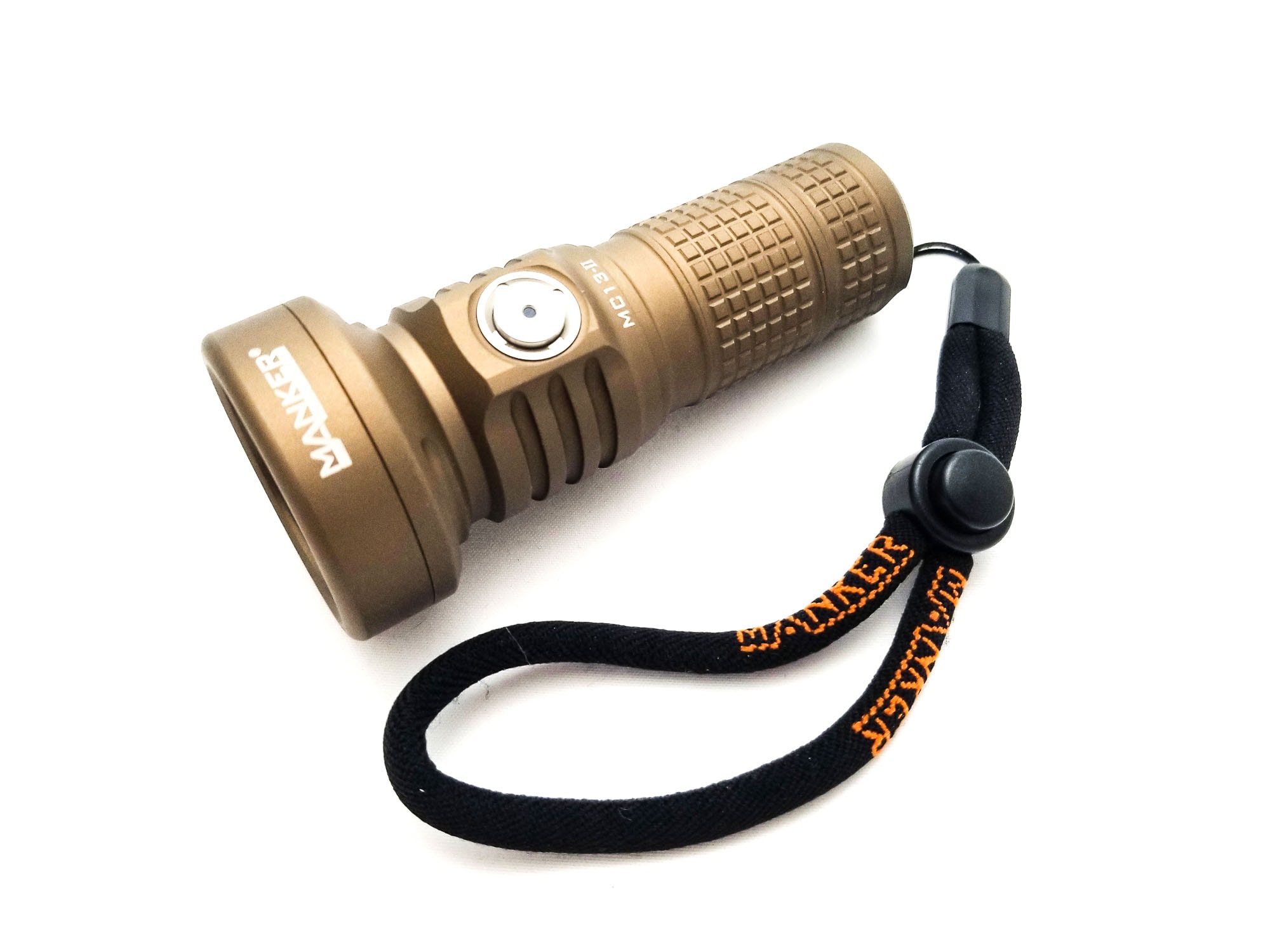
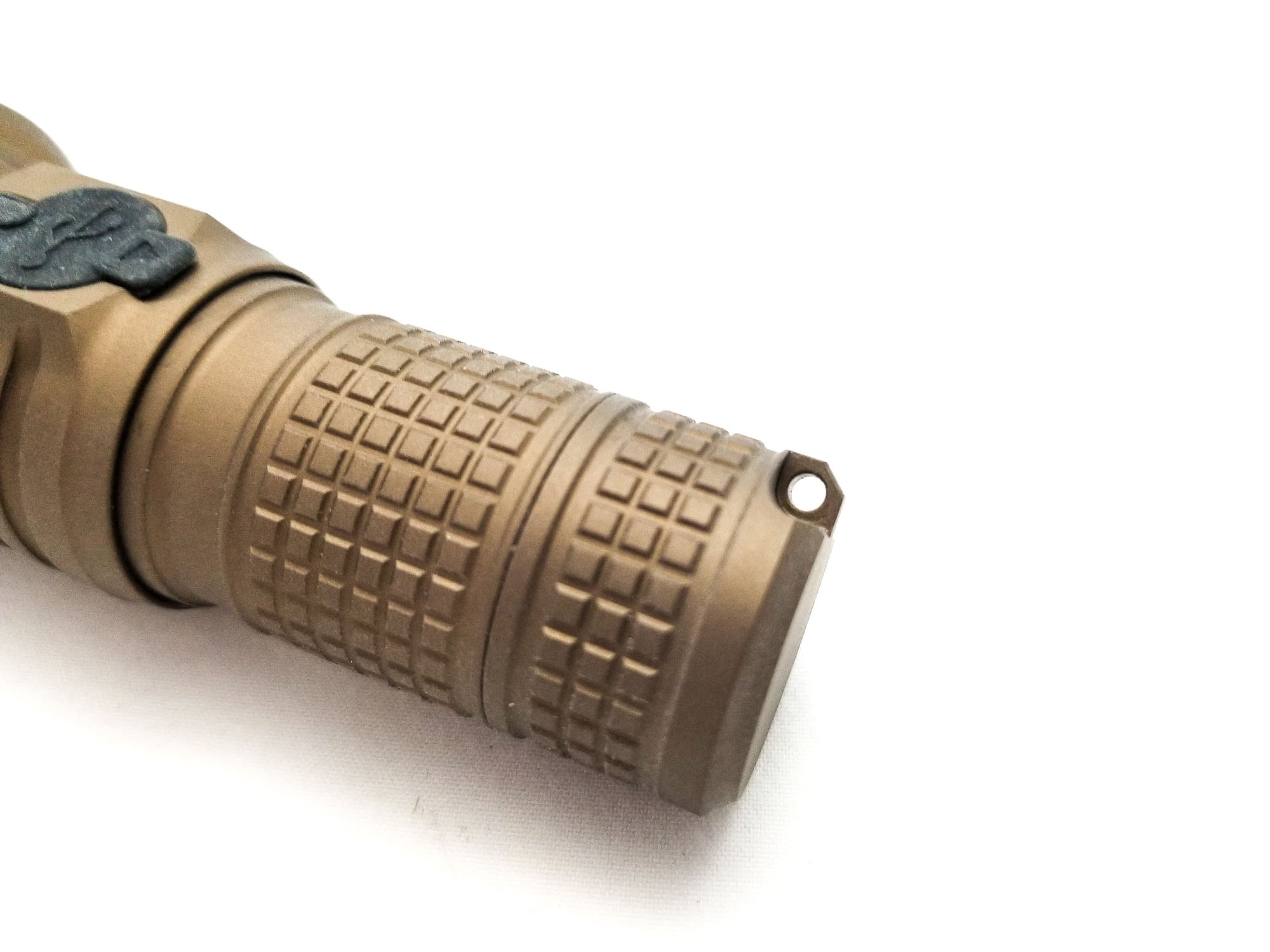
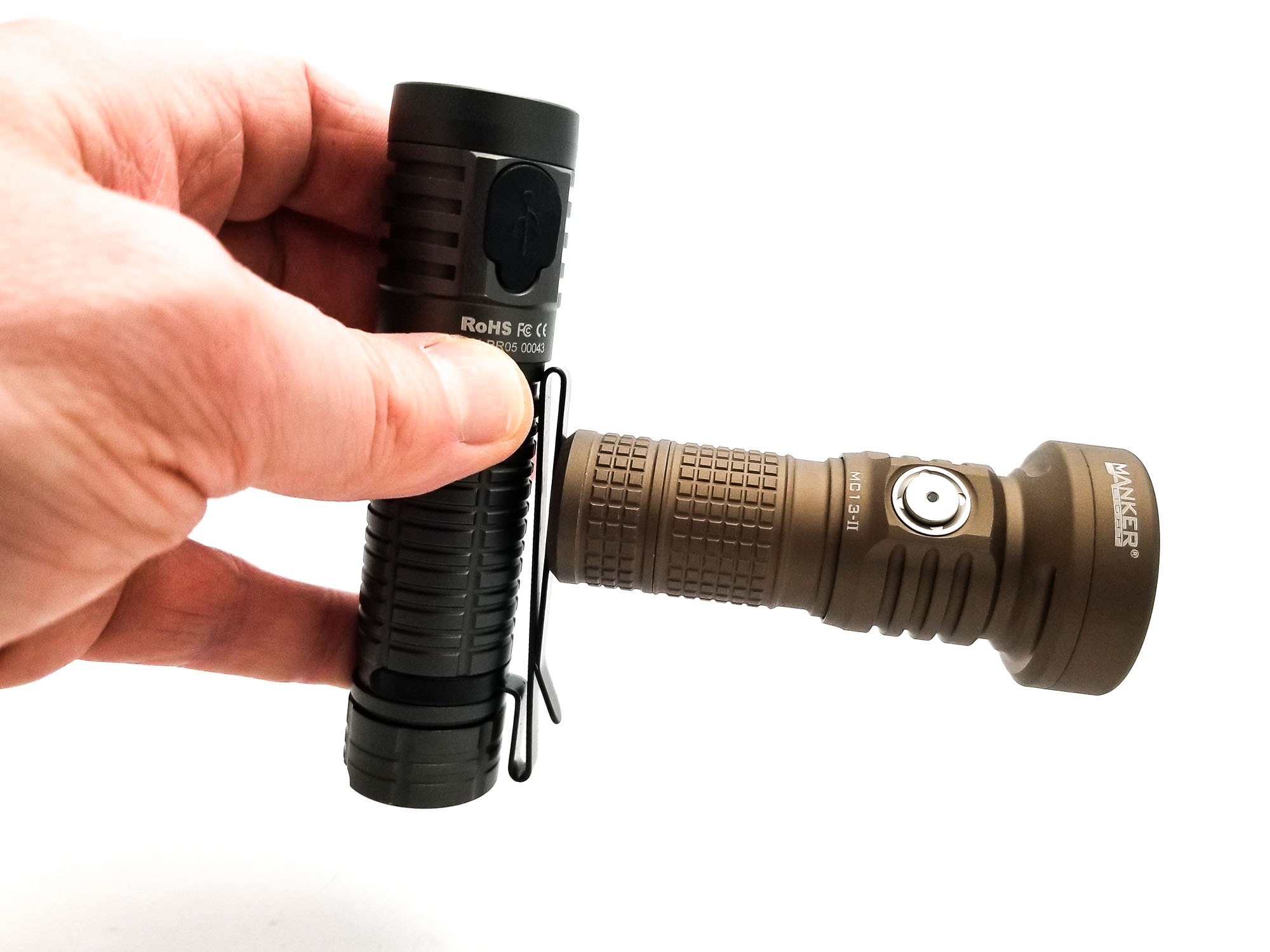
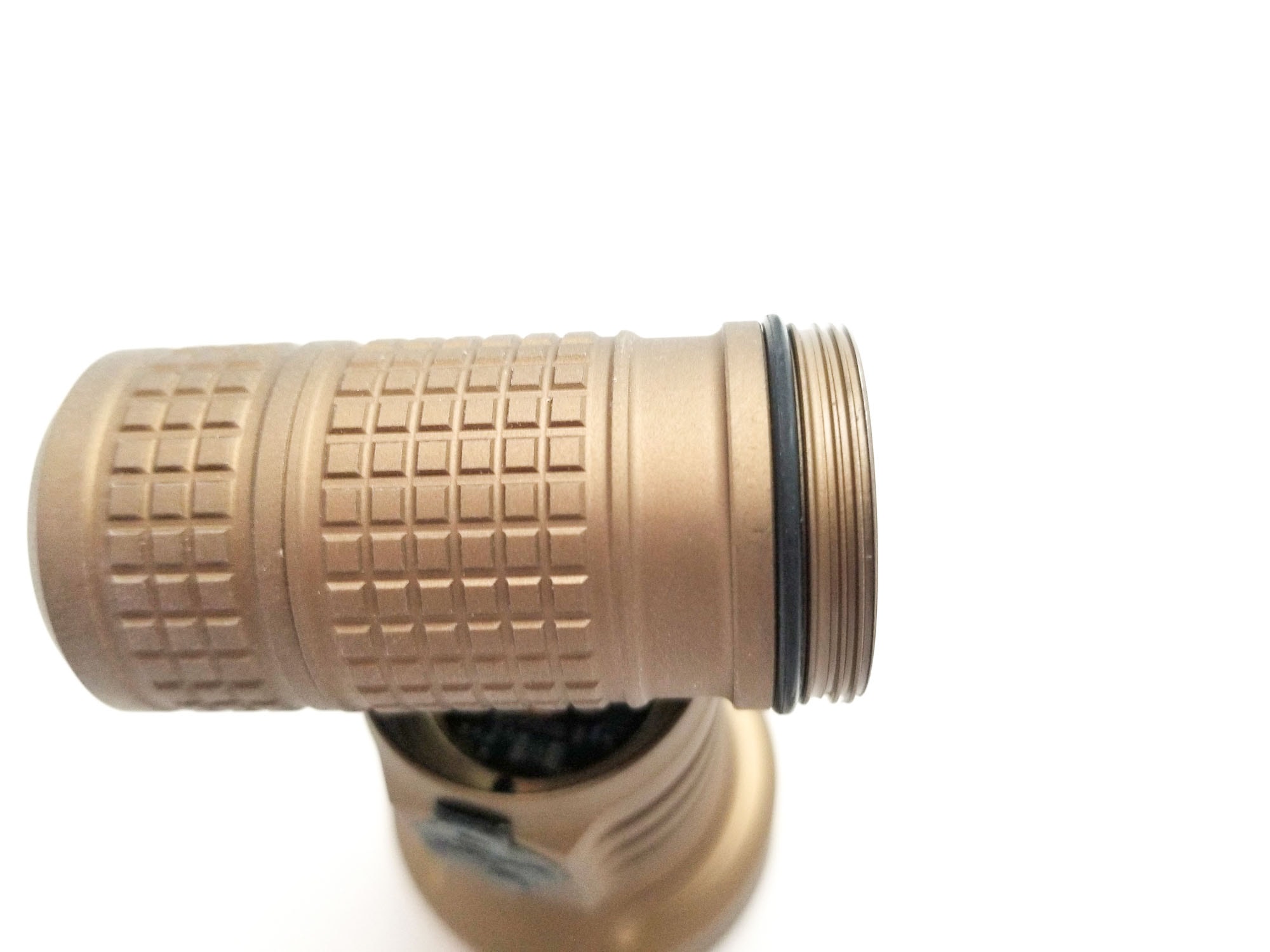
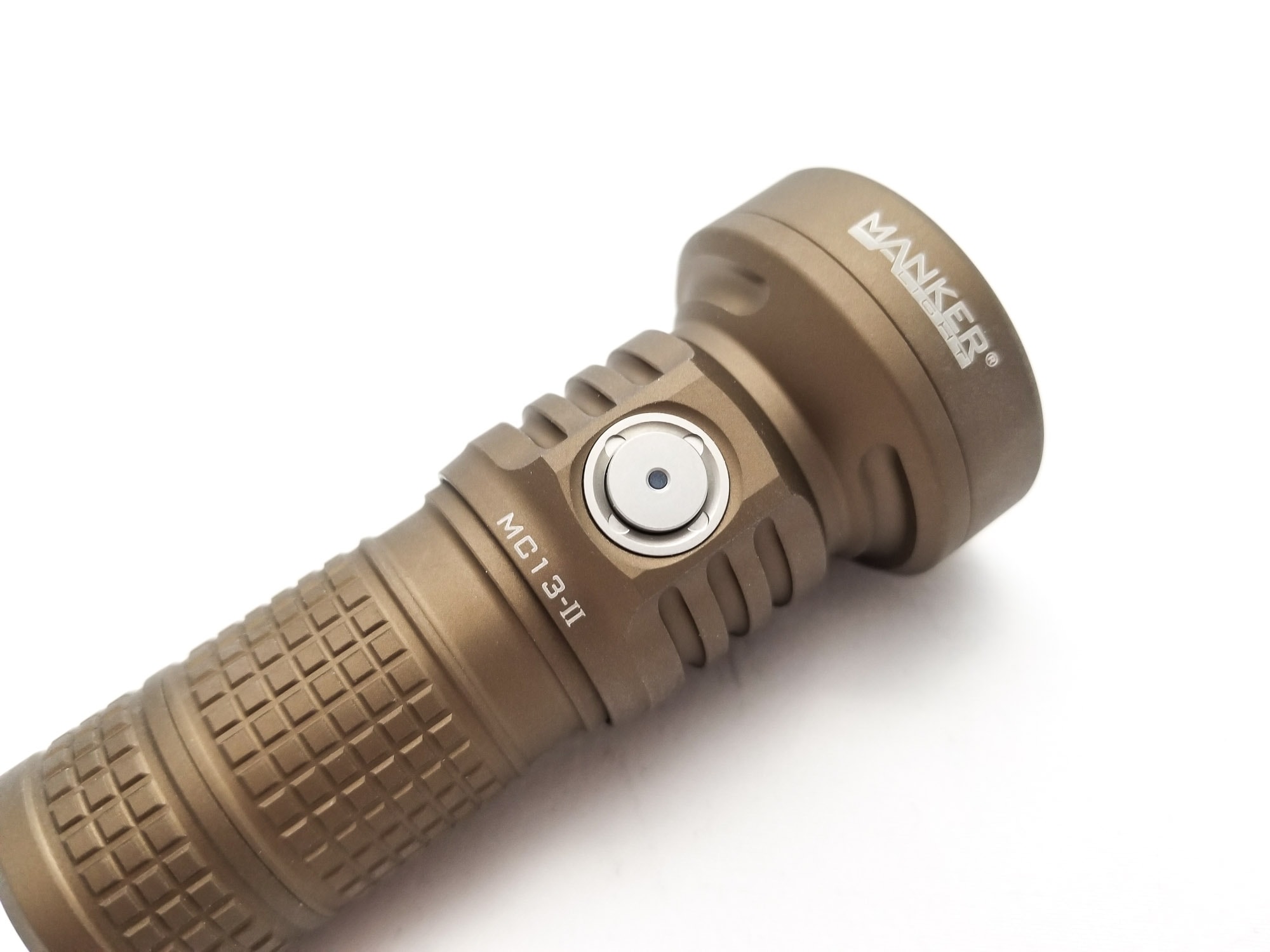
LED, Lens, Bezel, Beam, and Reflector
The non-special MC13 II featured the Luminus SFT-40-W LED, and it performed very well. Good output and very good throw. The Limited Edition MC13 II bumps it up a bit, adding the ridiculous SBT90.2. This is an LED I generally don’t encounter on anything less than a bigger thrower, but somehow Manker managed to stuff one into the way-too-small MC13 II host, and honestly, while I applaud Manker for being adventurous here, it is a little ridiculous. The SBT90.2 is part of Luminus’ specialty white LED product lineup. It sits on an 11×11 substrate (11×11 mm) and features a bond wire design with 24 bonding wires (12 for the anode and 12 for the cathode). It’s also domeless, and the very uniform LES contributes to very, very high luminance, even with 9 mm2 of light-emitting area. The LES is also capped with a glass lens with has an AR coating.
There are some downsides for this LED that make it almost unsuitable for small hosts, and that’s the low vF and low thermal resistance. LEDs like this can pull a lot of current when direct driven, up to 25 amps or close to 90 watts, so it needs a very good thermal path and good thermal management. What you do get though is some of the best cd/mm2 for a bigger LED, and close to 5000+ Lumens when properly driven. It only comes in cool white, and does have a tendency towards greenness at low currents, with the majority of the bins floating around the consumer market sitting right at 5500K to 5700K. The Opple Lightmaster 3 agrees: At 2 meters from the sensor, on Turbo the CCT is 5388K with CRI Ra 62.7. The duv is 0.0087, and pretty neutral as I expect with the SBT90.2 at higher output.
The bezel is aluminum and monochrome with the rest of the light. It extends a bit above the lens for some protection, but not much. While the MC13 II with the SFT-40-W sports a TIR, this one has a conventional SMO reflector. It’s somewhat shallow, but focuses the big SBT90.2 very well. It’s perfectly centered with a white centering gasket.
The beam is a nice mix of distance and very usable spill with a focused hotspot. It’s much more usable than the TIR-equipped light. I actually really liked the beam and it’s perfectly suited for general purpose work with more than enough beam distance. Using my eyeball luxmeter, you can easily hit objects out to 400 meters easily with this

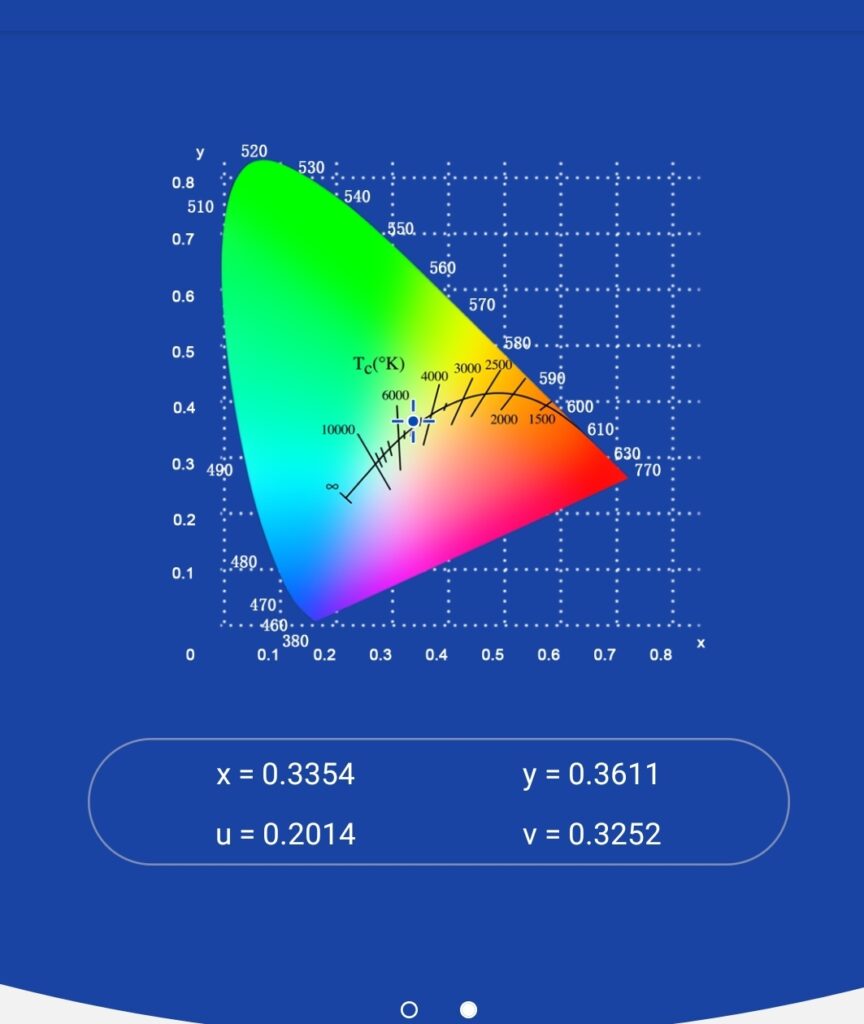
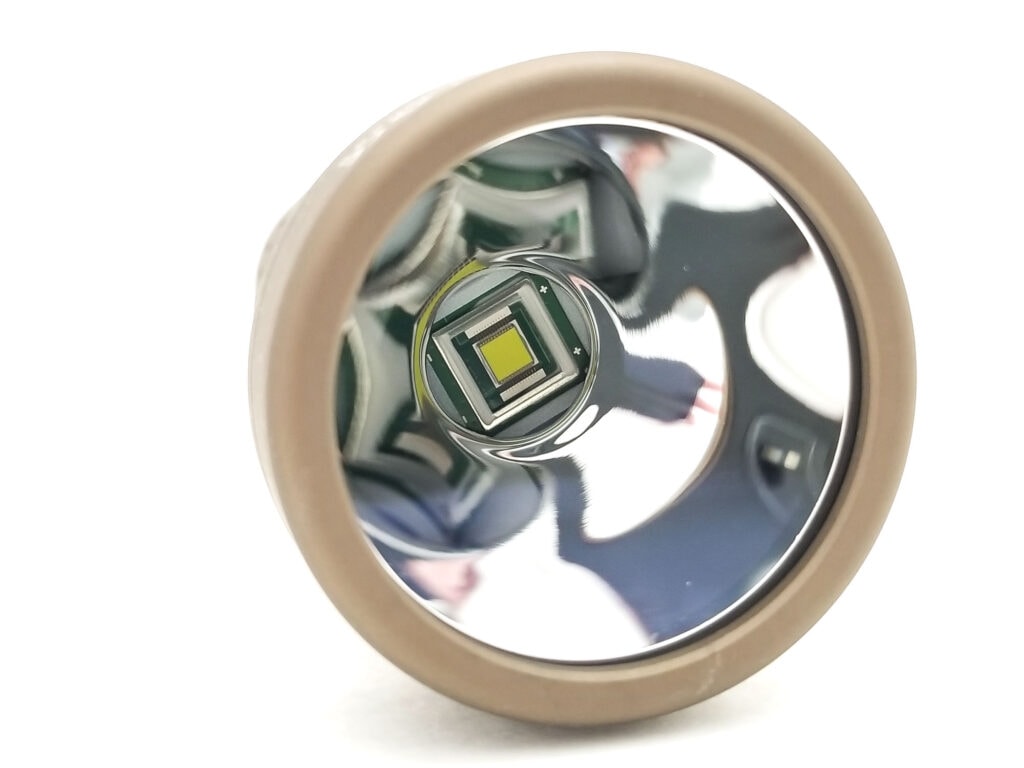
Dimensions and its competition
Dimensions:
| Manker MC13 II SBT90.2 | Millimeters | Inches |
|---|---|---|
| Length (18350 tube) | 91 mm | 3.6 in |
| Length (18650 tube) | 118 mm | 4.5 in |
| Head diameter | 40 mm | 2 in |
| Body diameter | 26 mm | 1 in |
Dimensions are rounded to the nearest millimeter, and to the nearest tenth of an Inch.
Weight:
| Manker MC13 II SBT90.2 | Weight in grams | Weight in oz |
|---|---|---|
| Without battery: | 99 g | 3.5 oz |
| With Manker 18350 battery | 126 g | 4.4 oz |
| With Manker 18650 battery | 145 g | 5.1 oz |
Weight is rounded to the nearest gram, and to the nearest tenth of an Oz.
Flashlight size comparison with its competition:
Group 1: Thorfire C8, Manker MC13 II Limited Edition (18650 battery), Manker MC13 II TIR, Astrolux EA01, Acebeam L17
Group 2: Emisar D1, Wurkkos TS25, Fenix PD35 v3, Manker MC13 II Limited Edition
Group 3 TIR optics: Manker MC13 II Limited Edition, Manker MC13 II SFT-40-W
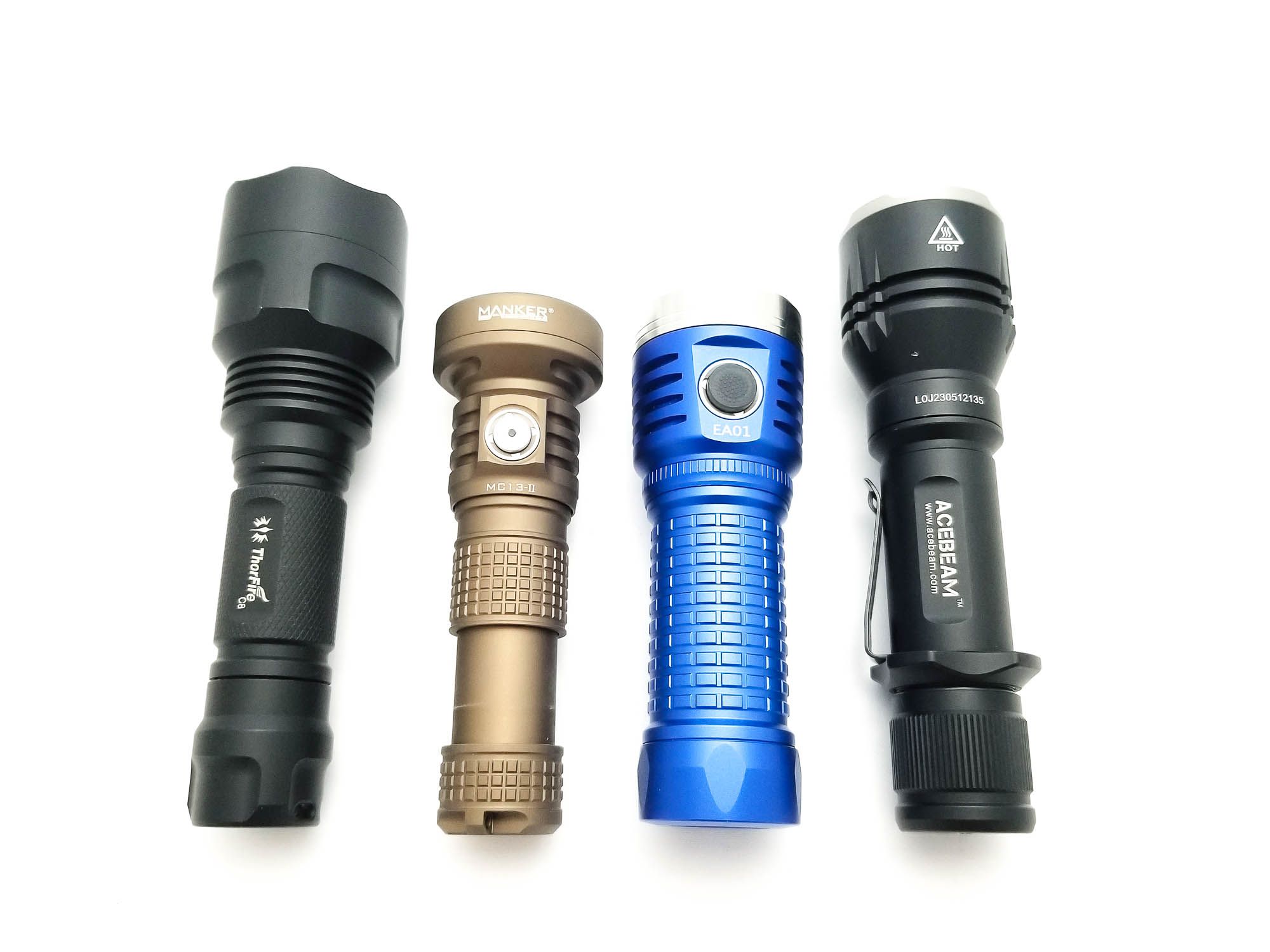
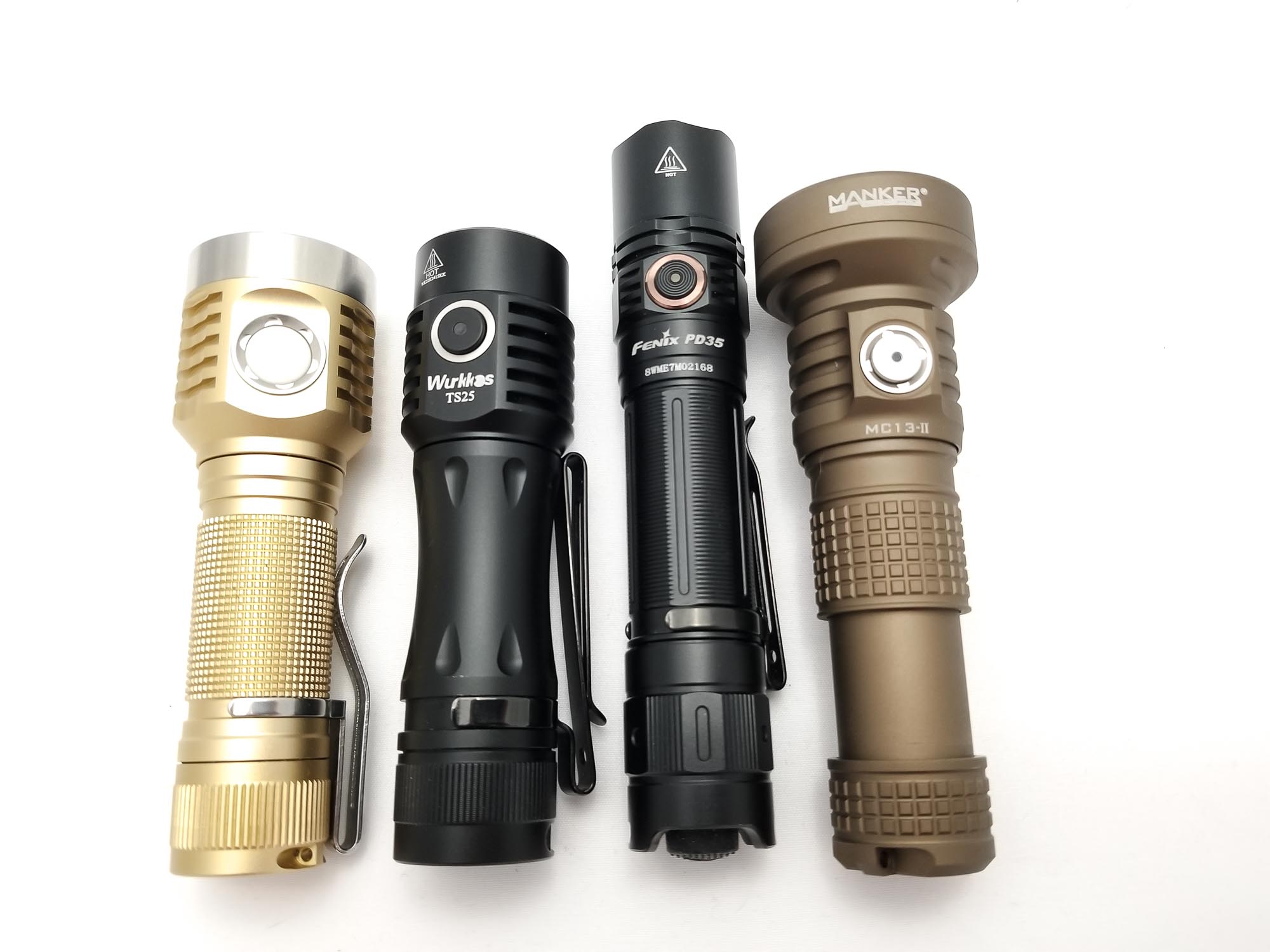
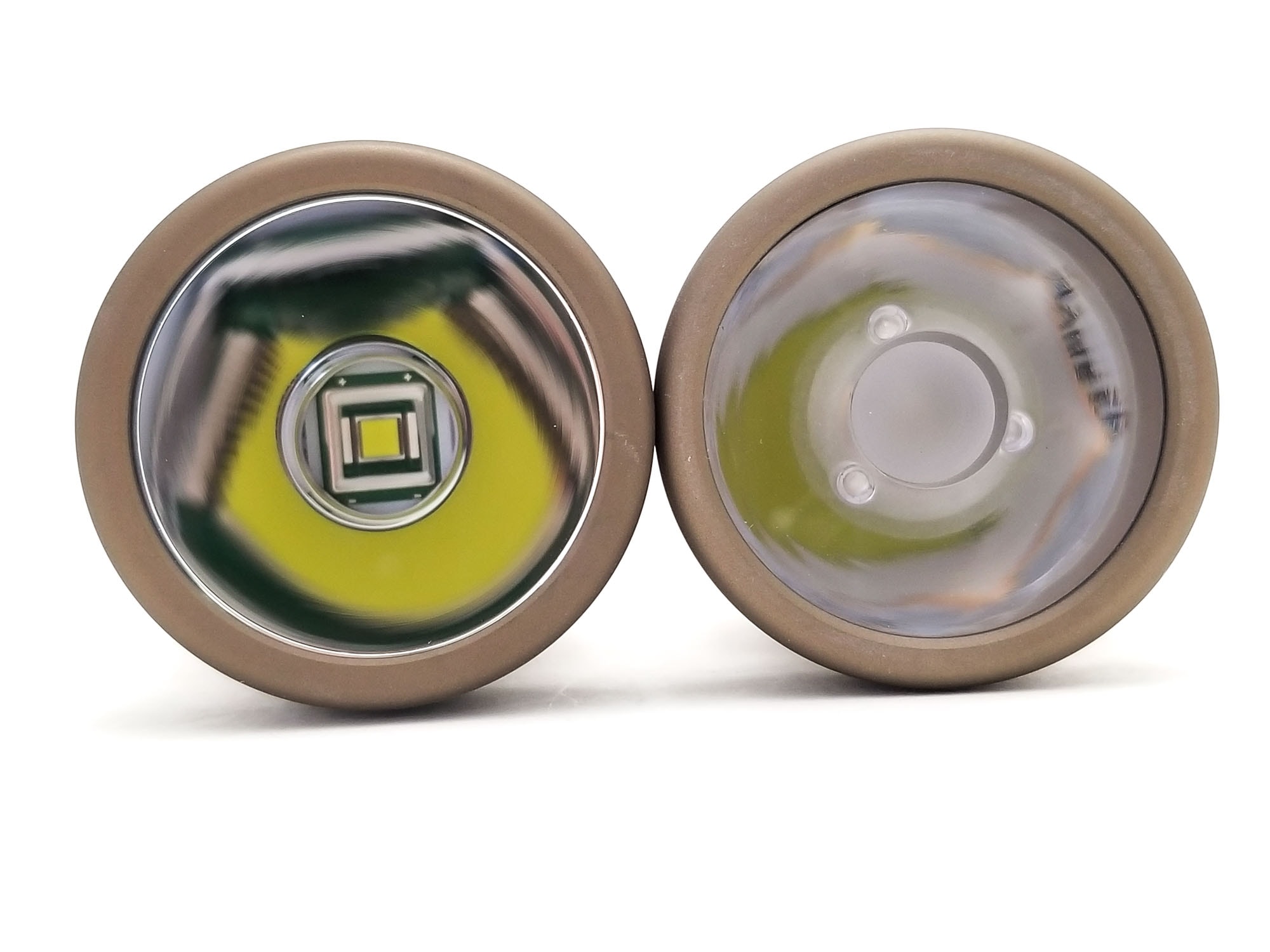
Manker MC13 II Limited Edition UI: User Interface and Driver
Manker only gives a small clue about the driver, described as a non-PWM constant current digital circuit. That could mean anything, so we’ll see what the runtimes show. I’m thinking it’s a buck driver, but again, the runtimes keep flashlights honest. For the UI, it’s unchanged from the SFT-40-W version, with the exception of the Moonlight group, and that’s a good thing since it’s a well thought-out simple UI, click on, click off, press and hold for modes, with all the commensurate shortcuts. Very simple and intuitive. There’s a special mode group for the Moonlight modes and one for the blinky modes, accessed by clicking and holding from off, or triple clicking from off or on for the blinkies.
Available modes:
- Moonlight, Moonlight 1, Moonlight 2, Low, Medium, High, Turbo
Available blinky modes:
- Strobe, Beacon, SOS
From OFF:
- Single click switch: Turns on in last memorized mode
- Long press switch: Turns on in Moonlight. To cycle through the Moon levels, press and hold
- Double click switch: Turbo
- Triple click switch: Strobe. To cycle through the blinky modes, press and hold
From ON:
- Press and hold switch: Switches modes L-M-H-L
- Single click switch: Turns off
- Double click switch: Turbo
- Triple click switch: Strobe
Mode memory:
- Last mode memory for the main mode group L-M-H. Turbo is not memorized.
Shortcuts:
- Click and hold from off activates the Moonlight mode group. Press and hold for 1 sec. to switch between the modes in the group Moonlight-Moonlight 1Moonlight 2.
- Double click for Turbo
- Triple click for Strobe/special blinky mode group. Press and hold 1 sec to switch between Strobe-Beacon-SOS
Low voltage warning:
- The LED indicator on the switch shows battery state. The LED is solid blue and stays lit for 10 seconds after turning on when the battery is >3.4 volts. The LED is purple after turn on for 10 seconds if the battery is 3.4 to 3.2 volts, the LED turns red and stays lit continuously for 3.2 to < 2.8 volts. Manker specifies LVP shut down at under 2.8 volts.
Strobe/blinkies
- Strobe, SOS, Beacon
Lock-out mode:
- Manual lockout by unscrewing the battery tube ⅛ turn, or electronic lockout activated by 4 clicks from off. The light will blink 4 times to acknowledge the lock, and the switch LED will glow when clicked if locked. Repeat to unlock.The light remembers the last mode that was selected when switched off and locked and starts in that mode when unlocked.
PWM
- None visible
Additional/summary info on the UI:
- This is a nice, simple and straightforward UI, and I really like it. While the multiple mode groups for the Moonlight mode and the special mode set for the blinky modes could be useful, I think it’s a bit unnecessary and adds complexity. It might be good for using the diffuser though, for when Moonlight is too low? Also, the Moonlight 2 looks really close to Low mode. I do think blinkies should be hidden though, so kudos to Manker for that. There should be ATR with Turbo mode, since this is a small host and will heat up quick, but yep…I’ll test that.
Manker MC13 II SBT90.2 Charging and batteries
The original MC13 took a single 18350 size li-ion battery, and while it’s great for keeping the form factor small, it’s still not that great for a high power flashlight. Manker realized this and gave the MC13 II 18650 size battery compatibility. For the Limited Edition light, it’s the same setup. The kit included a Manker-branded button 1100 mAh high drain 18350 li-ion cell.
It can accommodate both an 18350 and 18650 without swapping the battery tube!
Manker did this by incorporating a telescoping battery tube, so you’ve got a tube within a tube. It’s a really unique design, with the inner tube having threads on the bottom most part that threads into a short threaded section of the outer tube. To switch to 18650 size batteries, unscrew the battery tube, then unscrew the tailcap. The tailcap is fixed, so turning it just loosens the inner tube. Once it’s free of the threads, it will open up and extend. Insert the battery the normal way, negative end to the tail, positive to the driver, and screw in the battery tube. Easy peasy. Battery compatibility is not going to be an issue. A VapCell M11 18350 fit fine, and it happily digested a bunch of 18650s including flat top, button top, and a protected button top 18650. Manker did well here and added onboard charging. It’s USB type C, and rated for 2 amps. My Ruideng AT35 showed 1.93 A and my Hidance type C tester showed the same on type C to type C..
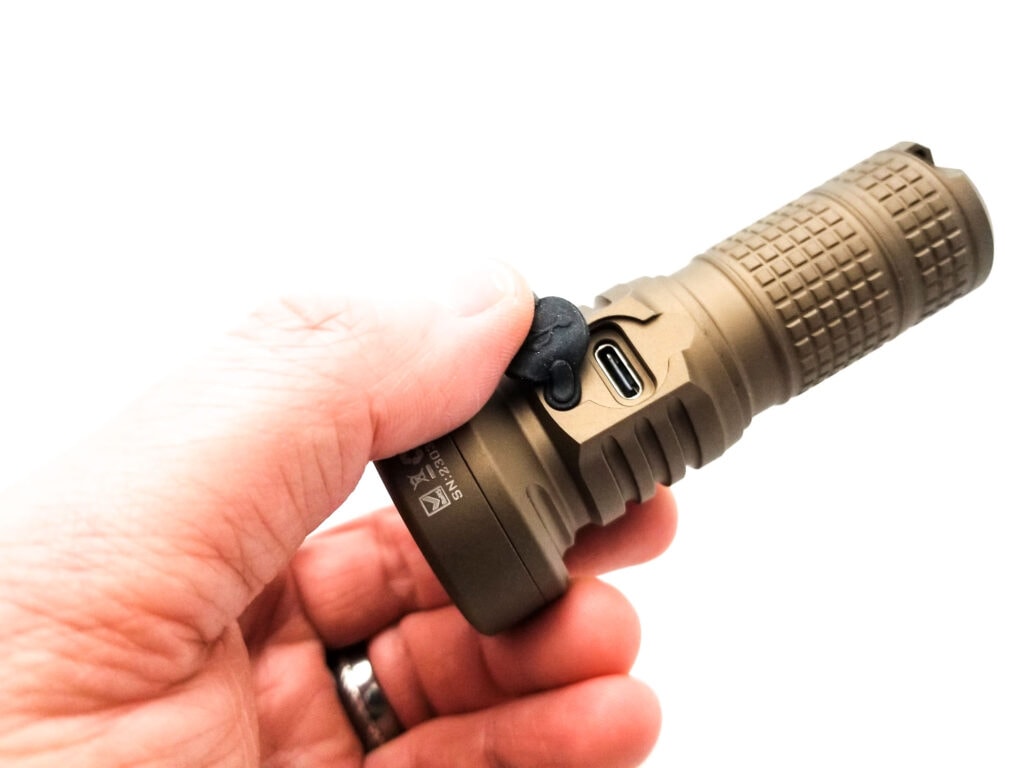
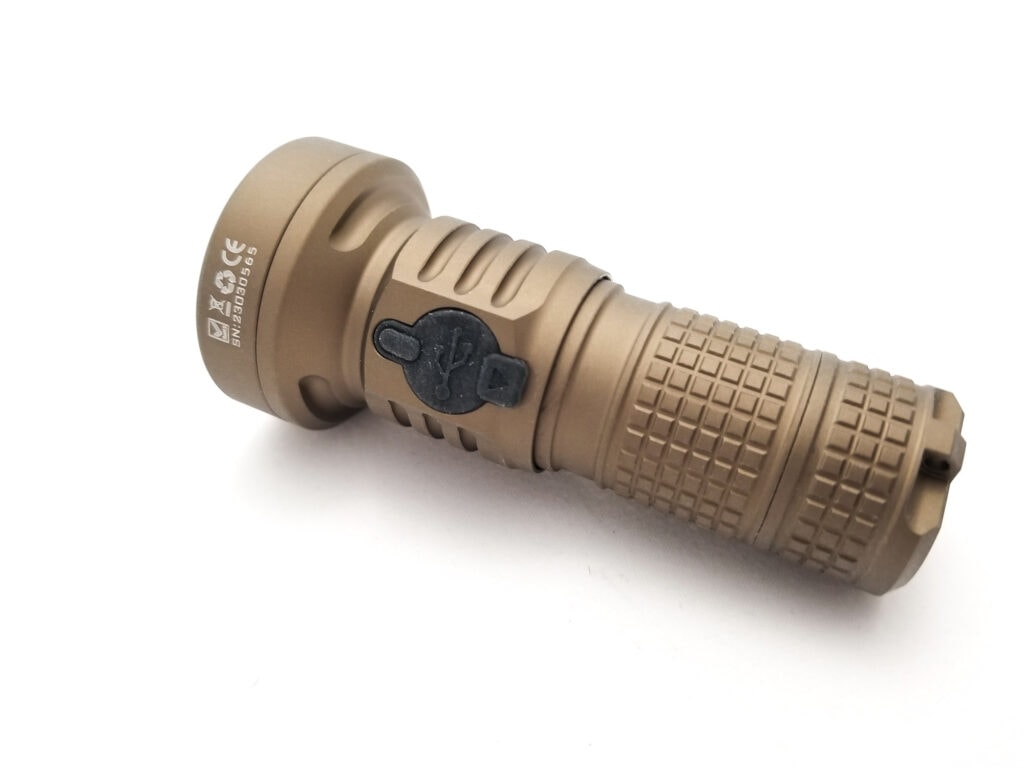
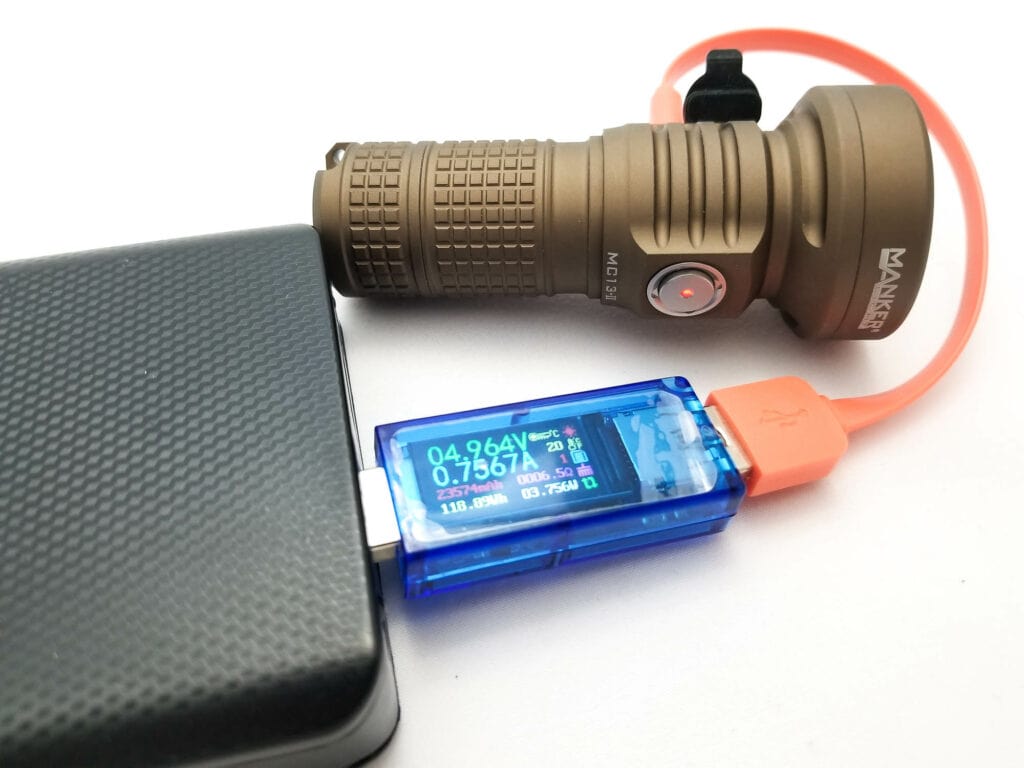
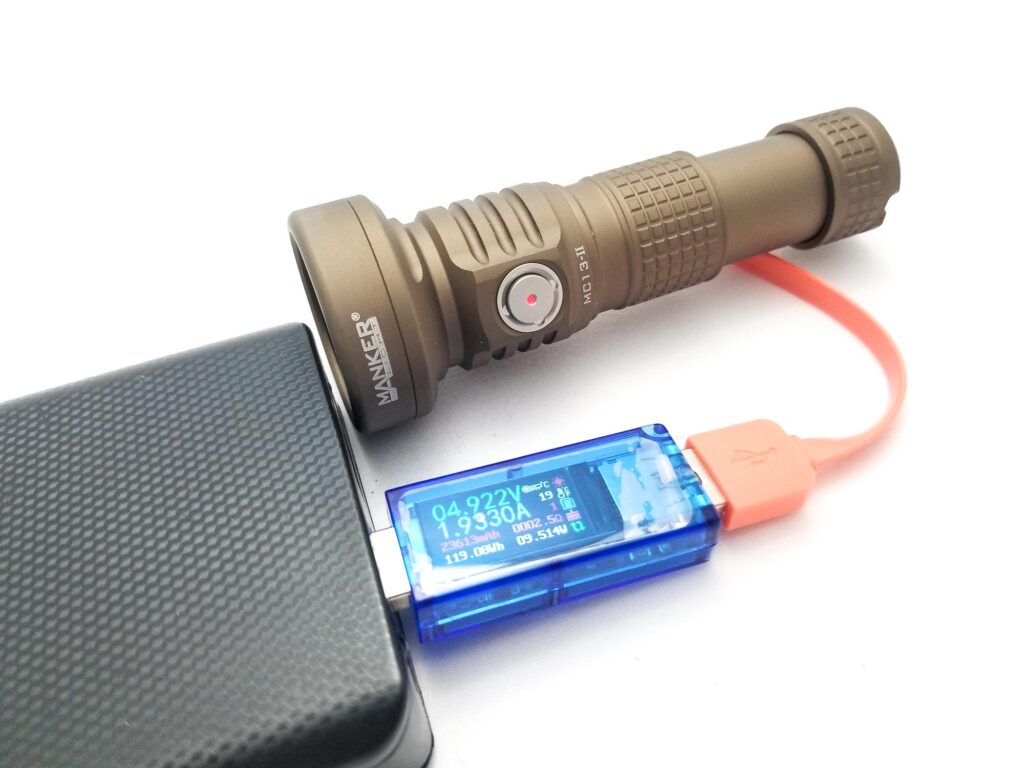
Performance test
Lumen measurements
How Lumens are Measured: Understanding ANSI FL1 Standards How Lumens are Measured: Understanding ANSI FL1 Standards: The ANSI FL1 standards specify that output in lumens should be measured 30 seconds after turning on, as this is the standardized time for measuring brightness according to the industry standard. This is why we focus on this part in our measurements. The ANSI FL1 standards require an ambient temperature of 22 ± 3°C. We record the ambient the ambient temperature to identify potential reasons for any observed discrepancies.Lumens are measured in my 50 cm integrating sphere with a Digi-Sense 20250-00 data logging luxmeter. The sphere has been calibrated with a Convoy S2+ measured to 260 Lumens and the figures are within 10% of actual. I used the included Manker branded 18650 and tested Medium, High, and Turbo modes. No amps this time due to the isolated current path.
| Mode | Specified | turn on | 30 sec | 10 minutes |
|---|---|---|---|---|
| Moonlight | 0.1-1.5 | N/A | N/A | – |
| Moonlight 1 | ? | N/A | N/A | – |
| Moonlight 2 | ? | N/A | N/A | – |
| Low | 300 | 349 lm | 348 lm | – |
| Med | 800 | 652 lm | 627 lm | 590 lm |
| High | 1550 | 1156 lm | 1119 lm | 566 lm |
| Turbo (18350) | 4000 | 2460 lm | 2189 lm | 529 lm |
| Turbo (18650) | 4500 | 3862 lm | 3235 lm | 443 lm |
Manker publishes specs with both the 18530 and 18650 batteries, and the outputs are the same except Turbo.. I’m getting less for Low, High and Turbo modes, but within the ballpark. Still, these are impressive figures for a pocket light with a single LED. The Moonlight modes were too low to measure, and Manker’s figures aren’t specific for each Moon mode.
Parasitic drain:
- N/A-can’t measure
Manker MC13 II Limited Edition battery Life: Runtime graphs
How Runtimes are Measured: Understanding ANSI FL1 Standards About ANSI FL1 runtime standards: The runtime is measured until the light drops to 10% of its initial output (30 seconds after turning on). This does not mean that the flashlight is not usable anymore. The last column shows how long the light actually works till it shuts off. If there is a + symbol, it means that the test was stopped at that particular point, but the light was actually still running. This happens on certain occasions, with certain drivers, firmware, or batteries.Lumens are measured in my 50 cm integrating sphere with a Digi-Sense 20250-00 data logging luxmeter. The sphere has been calibrated with a Convoy S2+ measured to 260 Lumens and the figures are within 10% of actual. I used a Molicel P28A 2800 mAh 18650 and tested Medium, High, and Turbo modes. I tested Turbo with the included Manker 1100 mAh 18350 for comparison to the 18650.
| Mode | Specified | Measured runtime ANSI | Time till shut off |
|---|---|---|---|
| Medium | 2h | 2h 32min | 2h 32min |
| High | 1h 50min | 1h 40min | 1h 40min |
| Turbo (18350) | 32m | 34min | 34min |
| Turbo (18650) | 1h 40min | 1h 38min | 1h 38min |
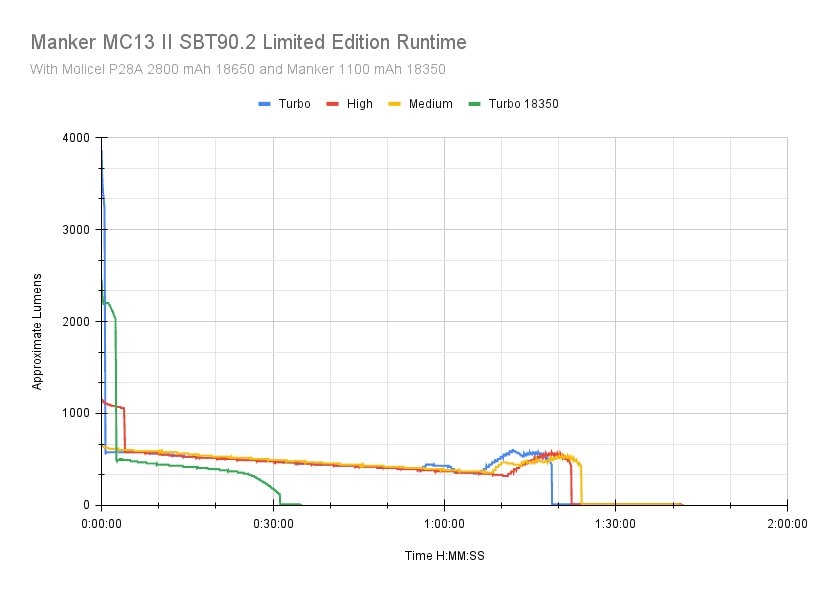
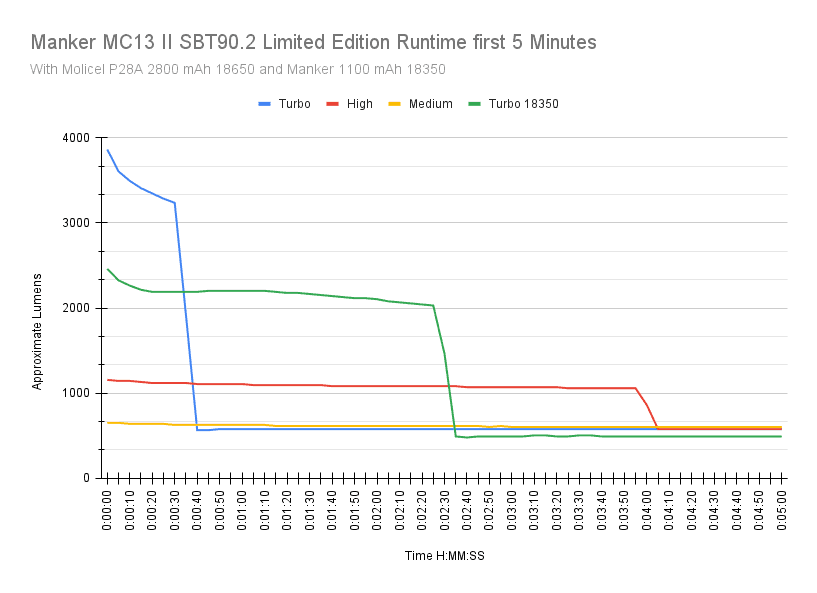
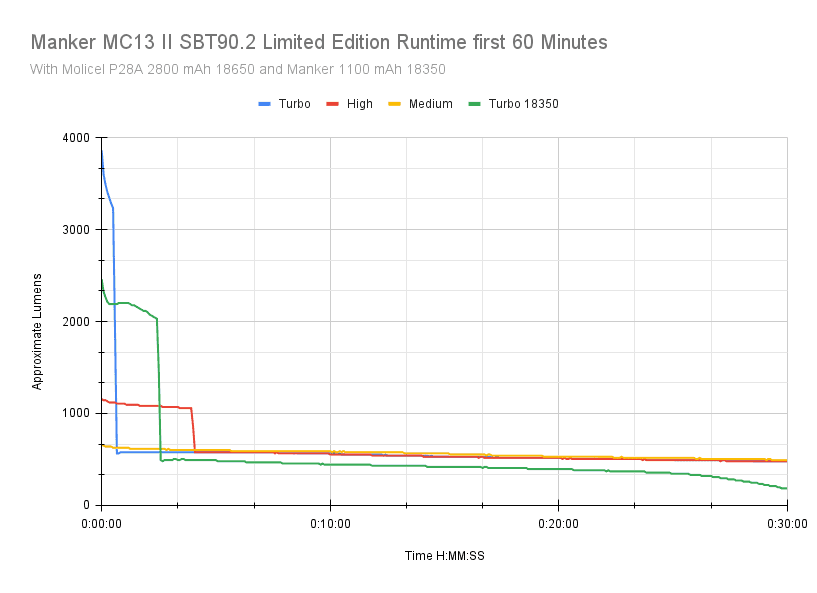
The runtimes mostly follow Manker’s specs, and for a small pocket light, I’m pretty impressed with these figures. You do take a considerable hit for runtime on the 18350 battery though, but that’s a consequence of more than 50% of the capacity of the 18650 cell. Although there aren’t many flashlights out there that can properly tame the mighty SBT90.2, the Manker does an admirable job considering it’s such a small host with limited thermal mass. Turbo starts at close to 4000 Lumens, and holds better than 3000 Lumens for 30 seconds before a steep step down. The output steadily decreases as the battery dumps down to 400 Lumens, then a slight increase before a deep drop to about 10 Lumens before shutting down. This behavior was repeated across High and Medium modes, but was absent on the 18350 cell, probably because it ran out of juice before it could thermo regulate?
Heating was rapid on High and Turbo: Jumping from 23 C ambient to over 40 C in 8 seconds. Turbo started stepping down after 30 seconds after cresting 70 C up to 75 C. The light was hand friendly for 10 minutes or so on Turbo, and the entirety of the High and Medium tests. This isn’t a regulated driver like on the SFT-40-W version, probably to accommodate the higher current demands of the SBT90.2. This LED needs about 22-25 amps to achieve 5000 Lumens, so this has to be pushing 19 amps for 30 seconds before dropping down. A lower output cell (Sony VTC6, Sanyo 18650GA, Samsung 30Q) would undoubtedly prolong the Turbo runtime, but with less output. High and Medium mode runtimes are nearly identical to the SFT-40-W version of this light, and have decent sustainability. Overall, a very impressive showing for the tiny Manker. I included some comparison runtimes of similar lights.
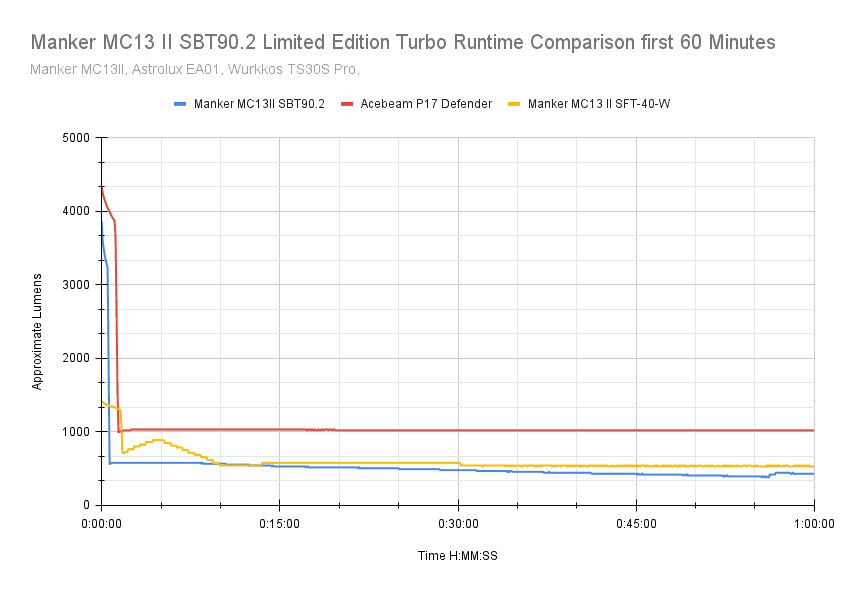
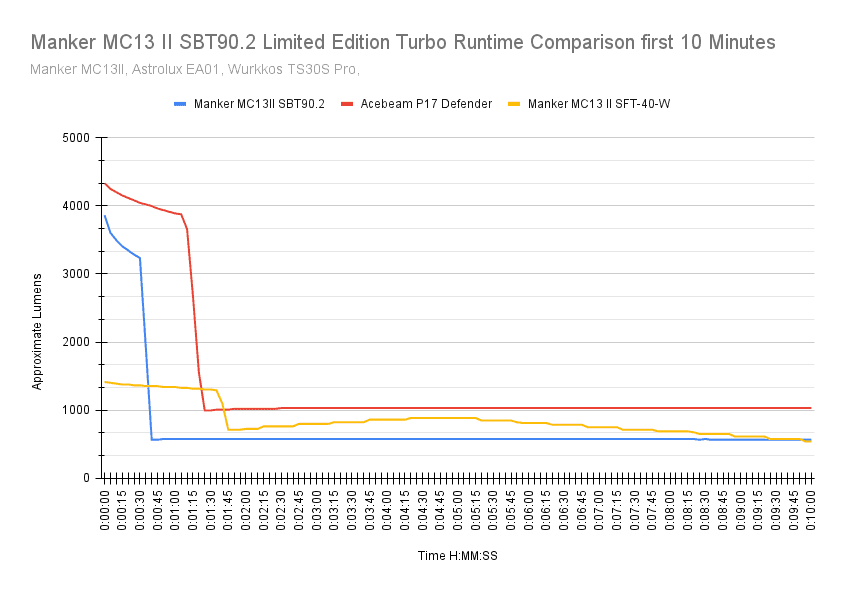
Peak beam intensity and beam distance measurements
About Peak beam intensity: Understanding ANSI FL1 Standards About peak beam intensity The calculated value of distance in meters at which the flashlight produces a light intensity of 0.25 lux. (0.25 lux is about the brightness of a full moon shining on an object). This means that the intensity has decreased so much, it becomes difficult to see darker objects, or objects that don’t reflect light. The columns ‘Meters’ and ‘Yards’ use rounded numbers.Beam distances are measured using a Uni-T UT383S luxmeter measured indoors at 5 meters using a fully charged Molicel P28A 18650 and the included fully charged 1100 mAh 18350. I tested Turbo only since the throw figures for the 18650 and 1835 are the same. Manker did not list any specs for the Moonlight modes. Measurements taken at 30 seconds.
| Mode | Specified | Candela measured | Meters | Yards |
|---|---|---|---|---|
| Moonlight | – | N/A | N/A | N/A |
| Ultra low 1 | – | N/A | N/A | N/A |
| Ultra low 2 | – | N/A | N/A | N/A |
| Low | 8,100 | 8750 | 187 | 205 |
| Medium | 19,600 | 16,625 | 258 | 282 |
| High | 30,625 | 28,725 | 339 | 371 |
| Turbo | 110,556 | 38,575 cd | 393 | 430 |
| Turbo at start* | 100,625 cd* | 634* | 694* | |
| Turbo 18350 | 90,000 | 69,525 | 527 | 576 |
Throw figures are reported by Manker for both the 18350 and 18650 batteries on the spec sheet. On paper, these are really good numbers for a 30 mm head flashlight. We all know the SBT90.2 is a throw machine, and always puts up impressive throw numbers for a big LED, even in small reflectors or TIRs. The SFT-40-W version of this light with the TIR has very good beam distance and it doesn’t give up much to the SBT90.2…at least at startup, since the output is already dropping rapidly by the ANSI measurement of 30 seconds. I almost got Manker’s figure for candela on Turbo at start and it’s way down on the 18350 cell. The startup and 30 seconds for the 18350 wasn’t enough of a difference to make a difference.
Beamshots
I compared the Manker MC13 II Limited Edition to some other throwy flashlights, some with TIR, some with the SFT-40-W LED (including the light’s counterpart). The Acebeam L17 features an Osram W2 LED, but the TIR is similar to the MC13 II. Photos taken with my Samsung Note 8. The 95 meter shots have the camera set to 0.3s ISO 200 and 5000K WB.
Beamshots of the following flashlights compared:
- Acebeam L17 (TIR)
- Acebeam P17 Defender (with XHP70.3 HI)
- Manker MC13 II SFT-40-W
- Manker MC13 II SBT90.2
- Astrolux EA01 (TIR)
- Wurkkos TS32 in spot mode (reflector)
- Wurkkos TS30S Pro (SBT 90.2)
- Mateminco MT-911 (with SBT90.2 clone)
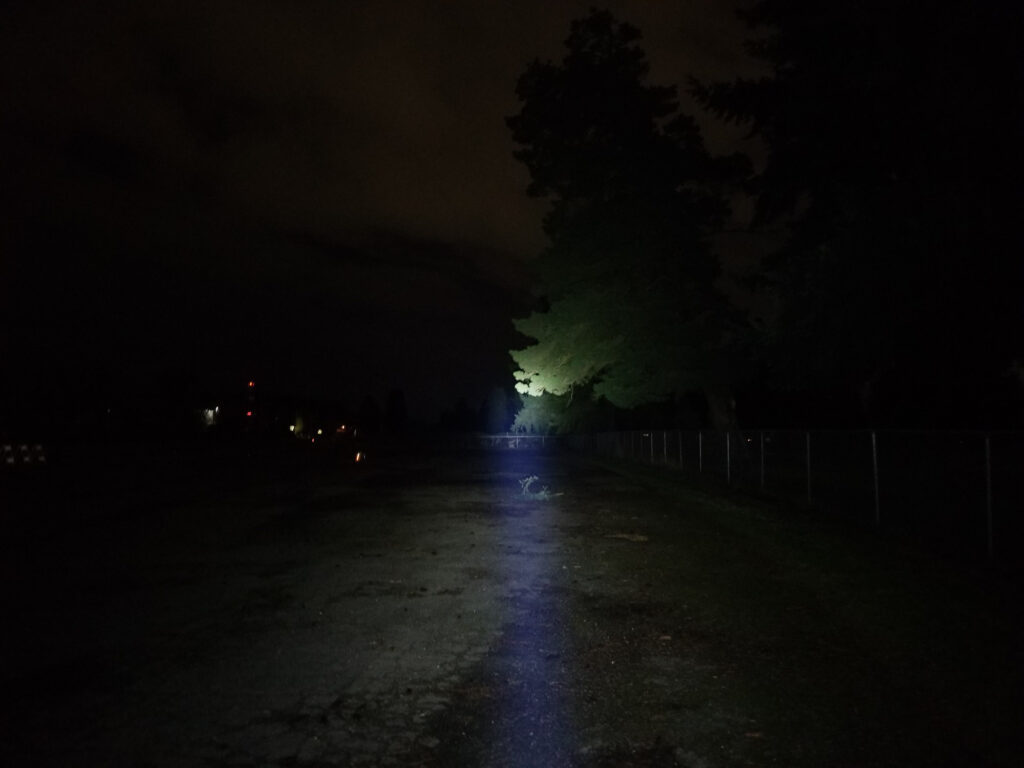
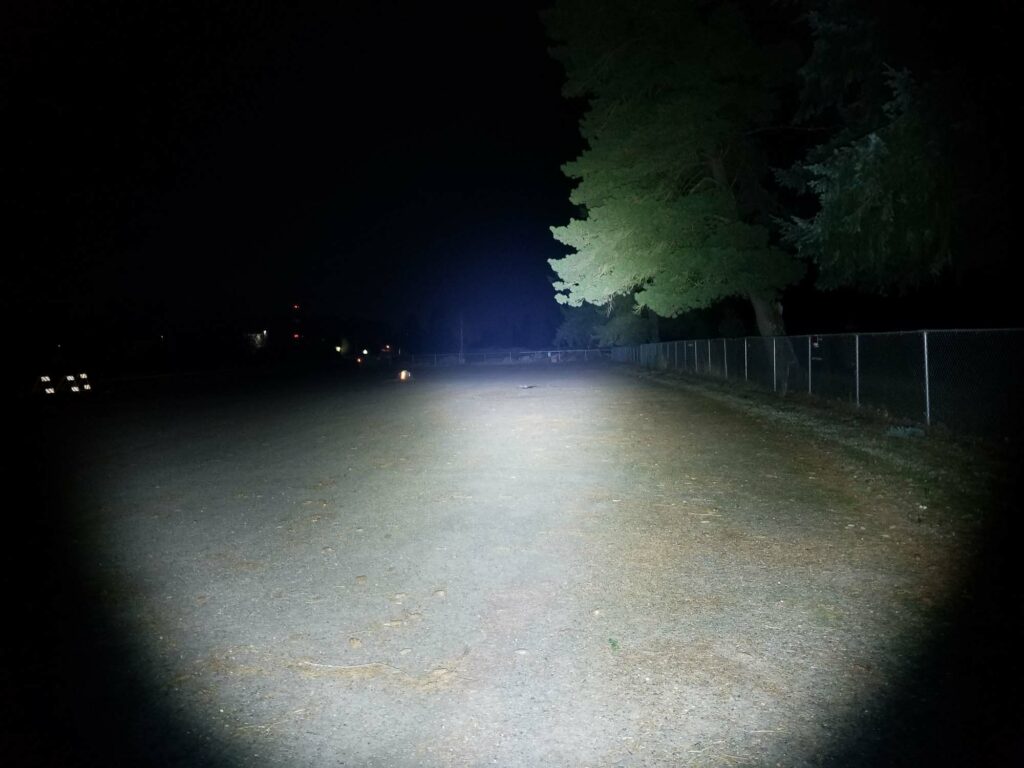
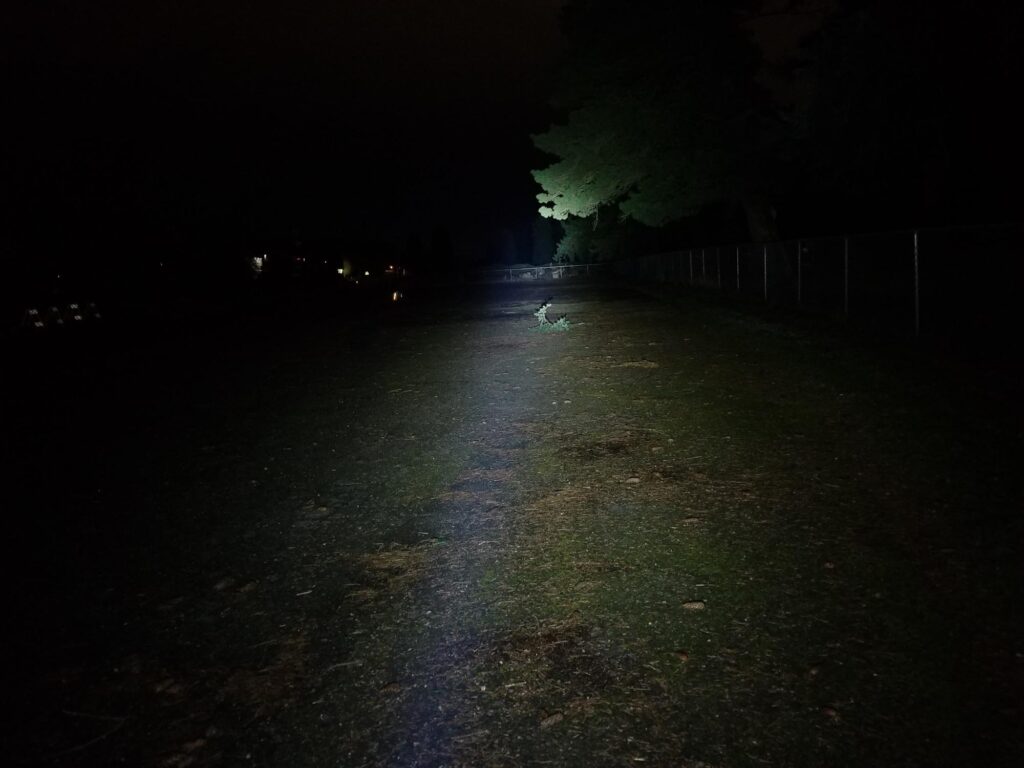
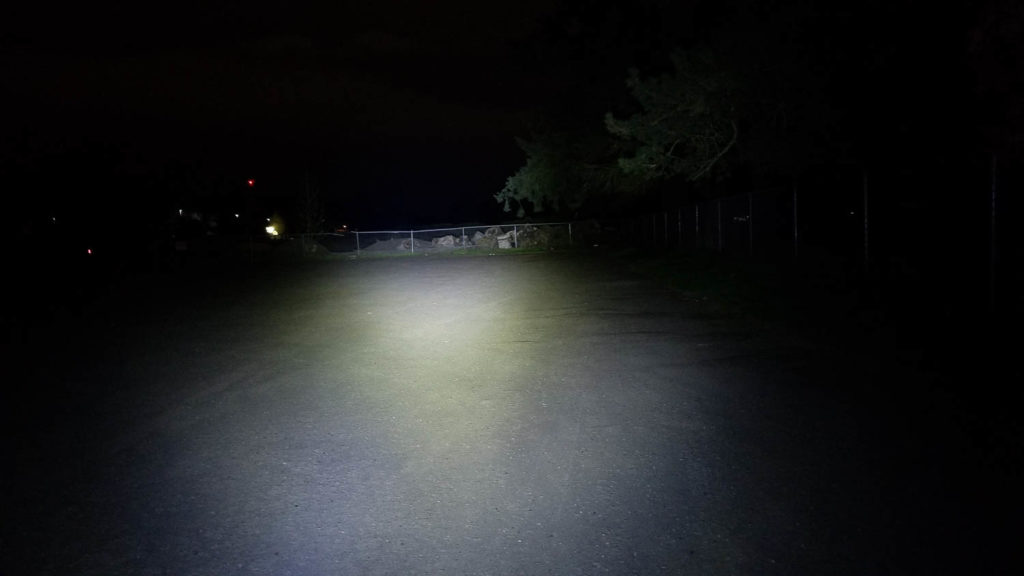
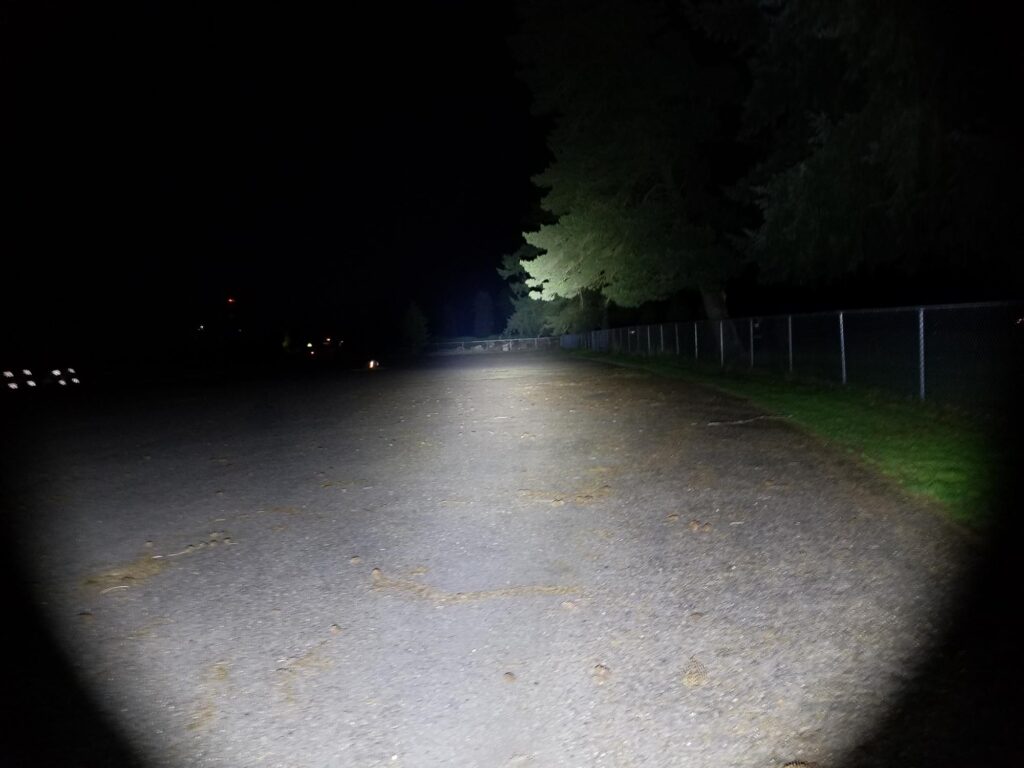

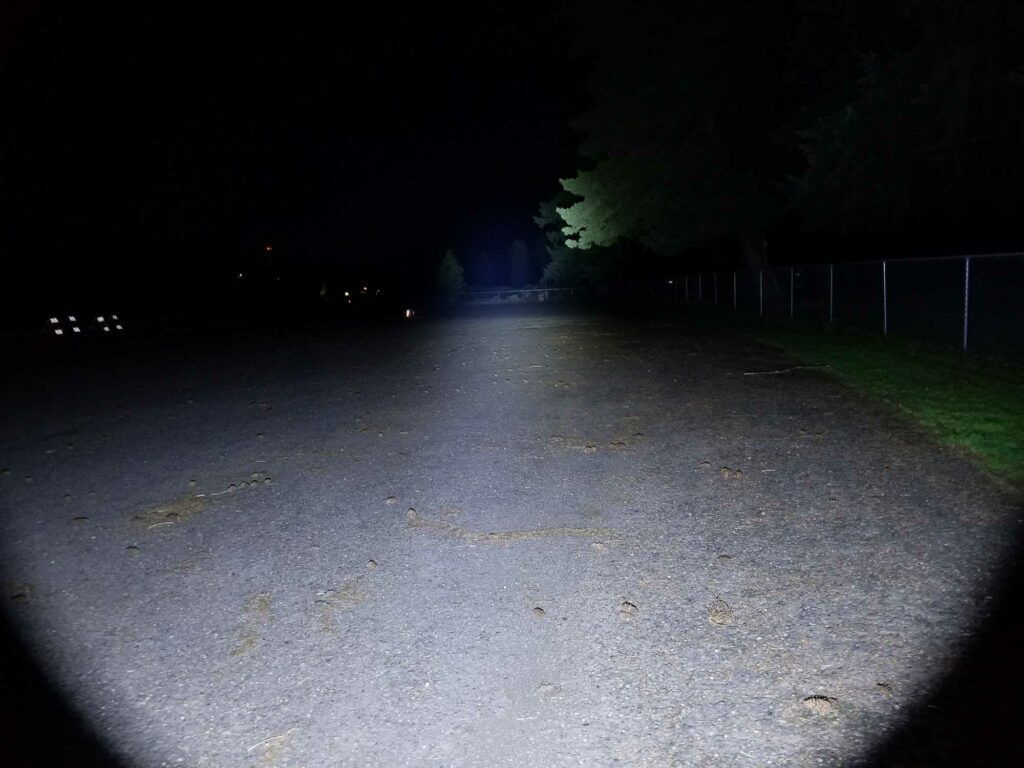
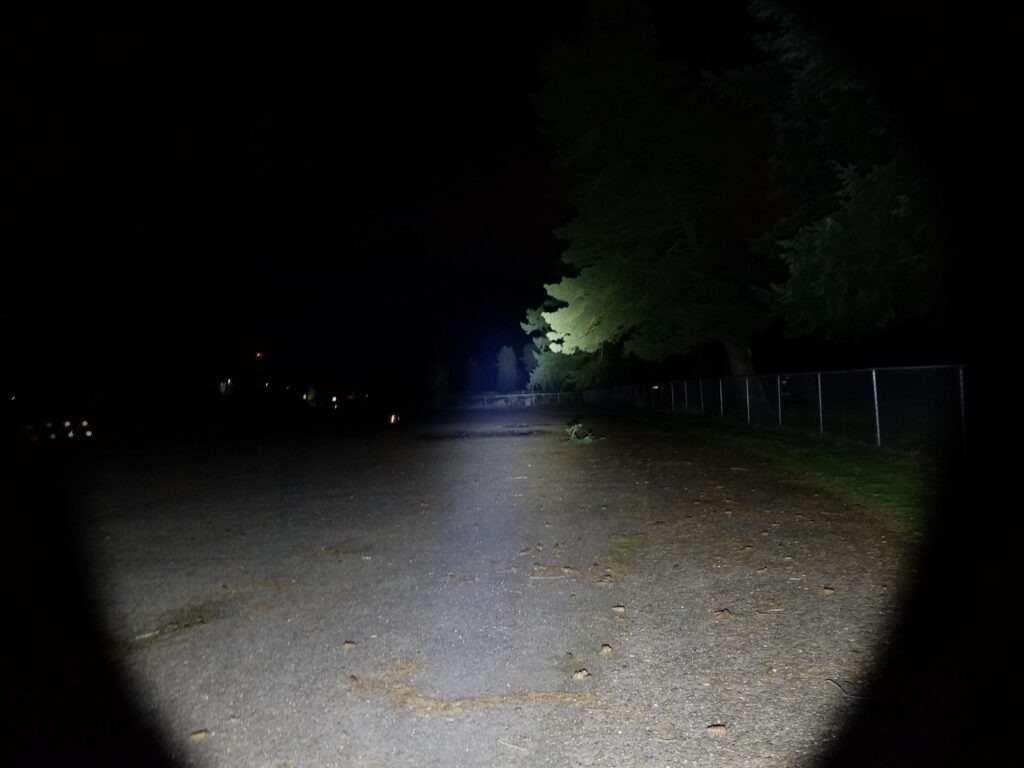
Disclaimer: This flashlight was sent to me for review at no cost by FlashlightGO. I have not been paid to review, nor have I been holding back on problems or defects.
Final Verdict
Pros
- Great build quality
- Works decently with the SBT90.2
- Simple UI
- Decent runtimes on the 18650
- Onboard USB type C charging
- Can use 18650 and 18350 with one tube
- Fantastic throw in a small light
Cons
- Didn’t meet factory output specs
- Gets hot super quick and steps down quick
- Short runtimes on the 18350
- No pocket clip
- Expensive. Doubles the price of the standard MC13 II
Explanation on star ratings:
1: Avoid: a match would be a better choice – 2: Poor: significant defect or issues; almost unusable – 3: Average: some defects or issues; but still usable 4: Good: recommended (minor issues) – 5: Great: highly recommended

4 stars: ★★★★
While our star rating provides a reliable indicator, we encourage you to read the full review to make an informed decision based on your own needs and preferences.
I loved the first MC13 II with the TIR and SFT-40-W. Great build quality, fit, finish, and great performance for a small pocket light. When manufacturers make major changes to a product, you can expect one of three outcomes: It works great with noticeable improvements, the improvements are unremarkable, or make it worse than the original. For example, stuffing a small block V8 in a Mazda Miata makes it fun, but drives down the practicality factor. In the flashlight nexus, the Nightwatch NI03S didn’t represent a stand-out improvement over the standard NI03. Neither did the NS14 over the NS59v2. However, this Manker MC13 II Limited Edition both improves on the SFT-40-W version in some aspects, but not so much in others.
What’s remarkable to me is how Manker managed to shoehorn the baddest high output thrower LED in the flashlight continuum into an EDC-size host…and make it work better than I expected. The only competition to this light would be the Emisar D1 v2, which also has the SBT90.2 as an optional LED, and performs similarly, but with the same shortcomings. Like the standard MC13 II, there’s not much I don’t like about this light. It performs well for what it is, and retains what I liked about the standard version. However, it also retained the standard light’s shortcomings; short runtimes on the 18350, no pocket clip, and quick step downs and quick heating (now exacerbated). The other issue is the cost. I get it that SBT90.2 lights have never been cheap (well…until the Wurkkos TS30S came around), the price of admission for this light is over $100 (but so is the Emisar D1 with this LED), which is double the price of the standard light.
Is it worth it? Well, if SBT90.2 rigs are your thing, you’ve got the cash to spare, and want a super-cool, versatile, and decent performing pocket light, I recommend you get one (use an 18650 to get the most out of it). For the rest of us, pick up the SFT-40-W version and you won’t be disappointed. 4 stars for the MC13 II Limited Edition SBT90.2.
Buy your Manker MC13 II here
You can get 15% off this particular light with the following code: 1lumen15
Get 10% off all flashlights at FlashlightGo with our exclusive discount coupon: 1lumen
1lumen selects and reviews products personally. We may earn affiliate commissions through our links, which help support our testing.